

THIS WEEK
CITY LIFE
04 Environment How native plant gardens slow street flooding
05 Fashion Despite some conflicts, a vibrant Chicago Fashion Week lays ahead
06 Make It Make Sense | Prout & Mulcahy Feds target unhoused Chicagoans, leaders constrain anti-ICE protests, chief judge asked to bar ICE arrests at courthouses.
07 Labor Pains | Brown The campaign to organize rideshare workers
FOOD & DRINK
09 Reader Bites Chai leche flan doughnut at Sarima Cafe
ARTS & CULTURE
10 Cra Work Artist and designer Summer Coleman uses reclaimed fabric to make vibrant so sculptures.
11 Art of Note “Mark Me, Too” explores the multidimensional histories that make up the identity of each artist in this group show.
THEATER
12 Plays of Note Dulcci and Saving Myself at the 8th Destinos: Chicago International Latino Theater Festival; plus a revival of Death of a Salesman with Gwydion Theatre and the world premiere of the dystopic Veal at A Red Orchid Theatre
13 Feature The 61st Chicago International Film Festival meets the moment.
14 Moviegoer What’s up, Doc?
15 Photo Essay The Hyde Park Jazz Festival defies federal defunding to shine brighter than ever.
16 Chicagoans of Note | Caporale Darien Williams, concert booker with Meanie Productions
18 Gossip Wolf Adventurous local label Amalgam throws itself a tenth birthday party, queer-fronted maqam ensemble Tayf celebrate the late Ziad Rahbani, and more.
20 Shows of Note Previews of concerts including Oxvy.Moron, Amira Jazeera, Chance the Rapper, and Upchuck
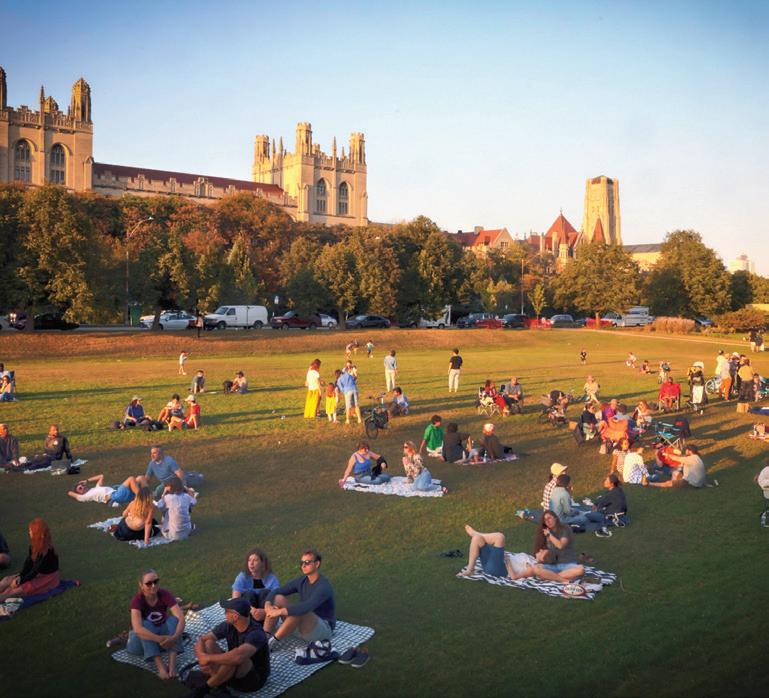


Late a ernoon
READER
Uber and Ly drivers are joining together to fi ght for better working conditions. SHIRA FRIEDMAN-PARKS
Still from Rental Family (2025) COURTESY CIFF
CORRECTIONS
The Reader has updated the online version of the piece “Howard Brown Health nurses prepare to strike,” originally published in our October 2, 2025 issue (volume 55, number 1), to correct the spelling of Marci Dodds’s last name.
In the October 2, 2025 issue’s table of contents, the issue was incorrectly listed as volume 54, number 52. The correct issue number is volume 55, number 1.
Find us on socials: facebook.com/chicagoreader twitter.com/Chicago_Reader instagram.com/chicago_reader linkedin.com search chicago-reader
The Chicago Reader accepts comments and letters to the editor of less than 400 words for publication consideration.
m letters@chicagoreader.com
INTERIM PUBLISHER ROB CROCKER
DIRECTOR OF ADVERTISING AND REVENUE
PRODUCTS AMBER NETTLES CHIEF OF STAFF ELLEN KAULIG
ASSISTANT MANAGING EDITOR
SAVANNAH RAY HUGUELEY
PRODUCTION MANAGER AND STAFF
PHOTOGRAPHER KIRK WILLIAMSON
SENIOR GRAPHIC DESIGNER AMBER HUFF
GRAPHIC DESIGNER AND PHOTO RESEARCHER SHIRA
FRIEDMAN-PARKS
THEATER AND DANCE EDITOR KERRY REID
MUSIC EDITOR PHILIP MONTORO
CULTURE EDITOR: FILM, MEDIA, FOOD AND DRINK TARYN MCFADDEN
CULTURE EDITOR: ART, ARCHITECTURE, BOOKS KERRY CARDOZA
NEWS EDITOR SHAWN MULCAHY PROJECTS EDITOR JAMIE LUDWIG
DIGITAL EDITOR TYRA NICOLE TRICHE SENIOR WRITERS LEOR GALIL, MIKE SULA FEATURES WRITER KATIE PROUT
SOCIAL JUSTICE REPORTER DEVYN-MARSHALL BROWN (DMB)
STAFF WRITER MICCO CAPORALE
SOCIAL MEDIA ENGAGEMENT
ASSOCIATE CHARLI RENKEN
VICE PRESIDENT OF PEOPLE AND CULTURE ALIA GRAHAM
DEVELOPMENT MANAGER JOEY MANDEVILLE
DATA ASSOCIATE TATIANA PEREZ
MARKETING MANAGER MAJA STACHNIK
MARKETING ASSOCIATE MICHAEL THOMPSON
SALES REPRESENTATIVE WILL ROGERS
SALES REPRESENTATIVE KELLY BRAUN
SALES REPRESENTATIVE VANESSA FLEMING
ADVERTISING
ADS@CHICAGOREADER.COM, 312-392-2970
CREATE A CLASSIFIED AD LISTING AT CLASSIFIEDS.CHICAGOREADER.COM
DISTRIBUTION CONCERNS
DISTRIBUTIONISSUES@CHICAGOREADER.COM
READER INSTITUTE FOR COMMUNITY JOURNALISM, INC.
CHAIRPERSON EILEEN RHODES
TREASURER TIMO MARTINEZ
SECRETARY TORRENCE GARDNER
DIRECTORS MONIQUE BRINKMAN-HILL, JULIETTE BUFORD, DANIEL DEVER, MATT DOUBLEDAY, JAKE MIKVA, ROBERT REITER, MARILYNN RUBIO, CHRISTINA CRAWFORD STEED
READER (ISSN 1096-6919) IS PUBLISHED WEEKLY BY THE READER INSTITUTE FOR COMMUNITY JOURNALISM 2930 S. MICHIGAN, SUITE 102 CHICAGO, IL 60616, 312-3922934, CHICAGOREADER.COM
COPYRIGHT © 2025 CHICAGO READER ALL RIGHTS RESERVED. CHICAGO READER, READER, AND REVERSED R: REGISTERED TRADEMARKS ® TO CONTACT ANY READER EMPLOYEE, EMAIL: (FIRST INITIAL)(LAST NAME) @CHICAGOREADER.COM



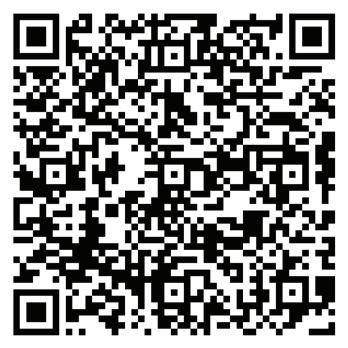

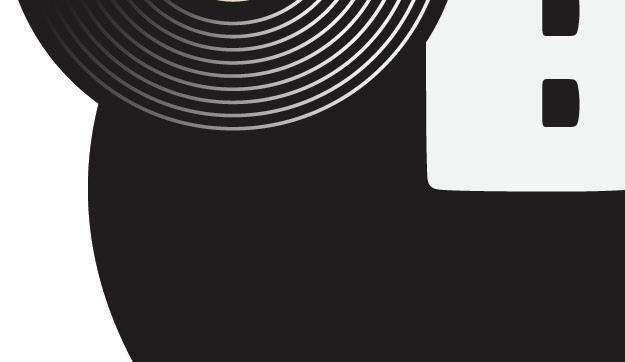




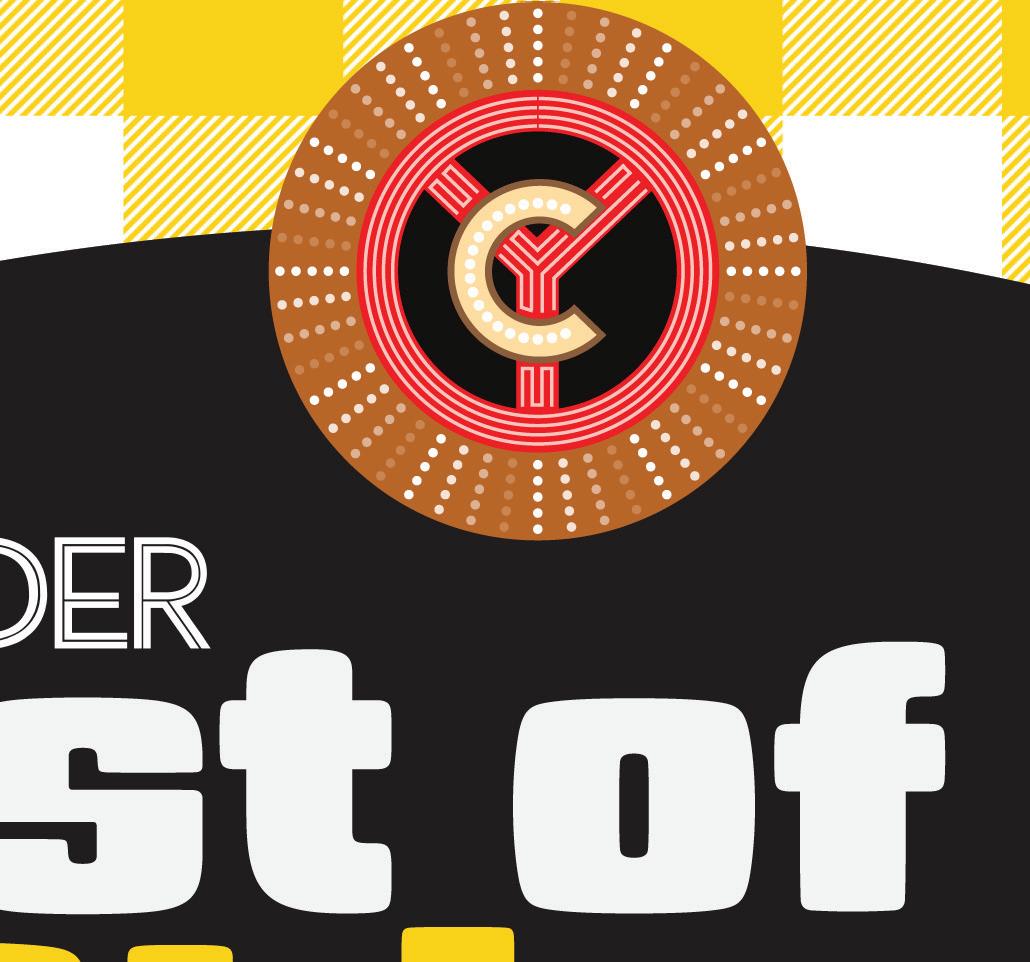





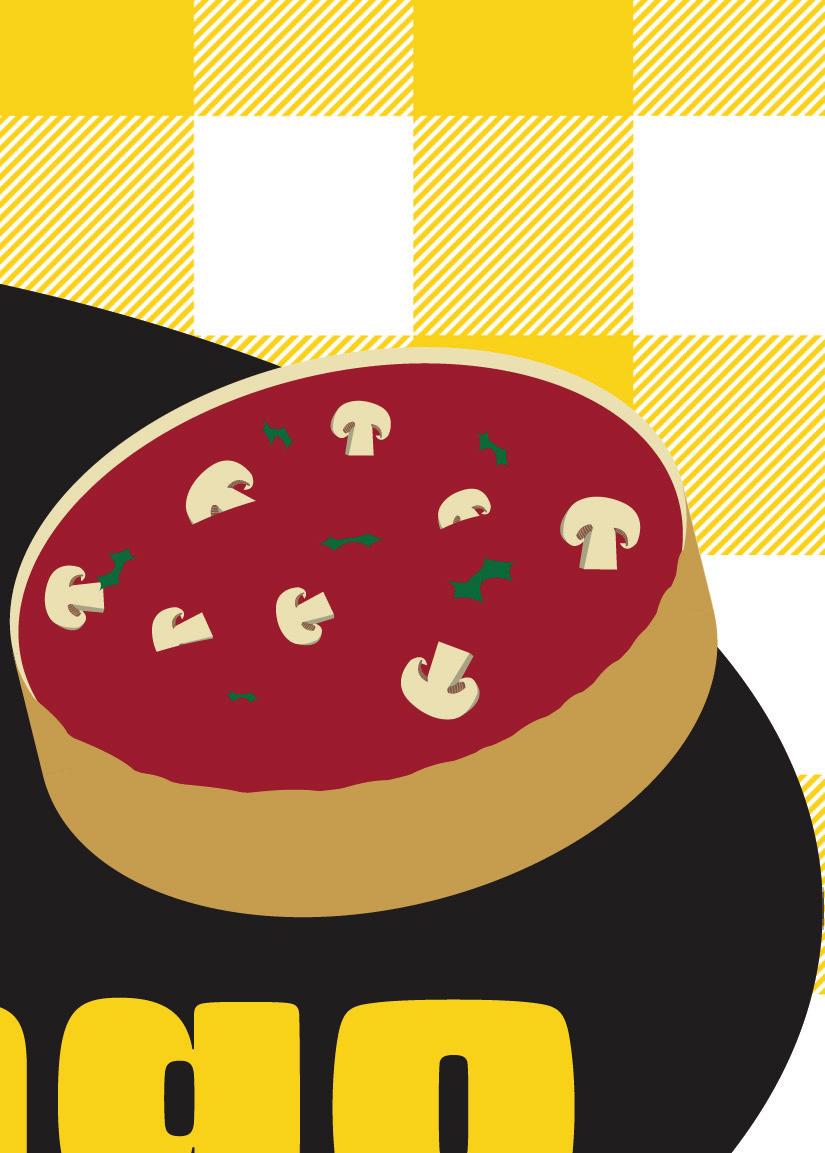
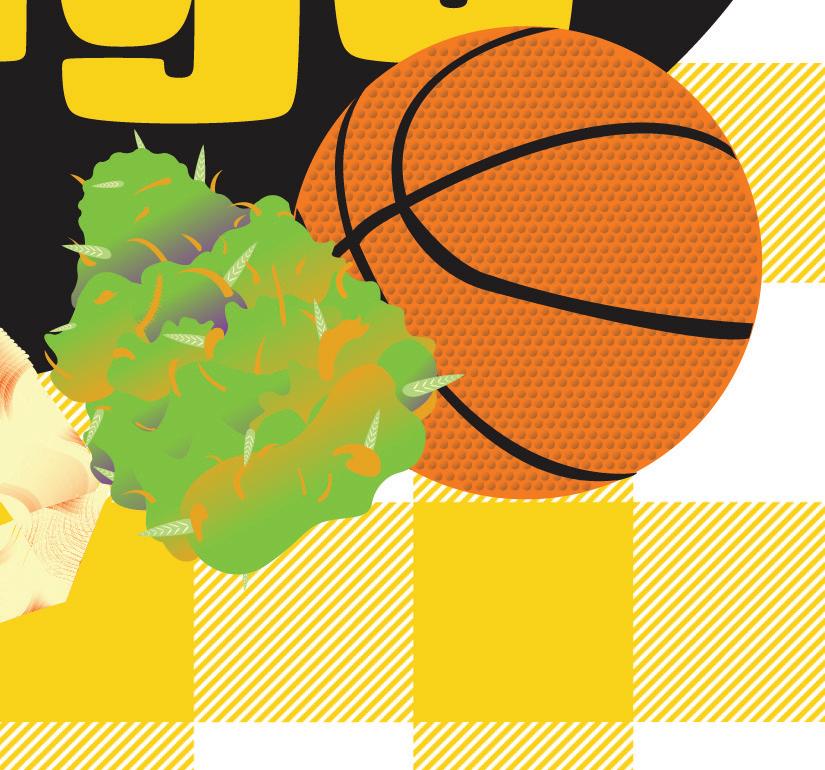

CITY LIFE


can’t drink it all, so if the water doesn’t back up into basements, it spills into the river.
Even a light rain creates puddles that swallow curbs, because the infrastructure’s job is to protect us from sewage flooding, not to keep our streets dry. Chicago uses two key systems to reduce sewage flooding: the Deep Tunnel and restrictor valves. The massive Deep Tunnel system holds billions of gallons of stormwater and sewage. It keeps this water out of streets and basements until it can be treated.
Restrictor valves, placed in storm drains, slow the flow of rainwater into sewers so the system isn’t overwhelmed, causing that leftover water to pool in the streets. With much of the city covered in turf or concrete, the additional stormwater has nowhere to go. When a heavy downpour causes flooding, the costs add up fast. From 2007 to 2011, Cook County residents filed over 181,000 flood claims. The Center for Neighborhood Technology (CNT) reported that these claims totaled $773 million. Out of 100 households that CNT surveyed, 70 percent of respondents reported flooding three or more times in those five years.
Green infrastructure, like native gardens, pathways, and soil systems, absorbs rainwater where it falls. Instead of overwhelming the sewers, water sinks into the ground, nourishing plants. And those plants can be beautiful, too. Imagine pollinator gardens filled with native flowers that attract butterflies and bees. That’s the solution Janice Horwich and Joanne Yonan brought to Lakeview’s Graceland West neighborhood. They had tried green infrastructure in their own yards and were ready to expand it to their whole neighborhood. In 2014, as members of the Graceland West Community Association (GWCA), they
URBAN ENVIRONMENTS
Beneath the surface
Graceland West’s native plant gardens are beautiful pollinator habitats engineered to absorb thousands of gallons of stormwater annually.
By YIANNIS MASTORAS
launched an environmental committee with the goal of tackling two problems at once: flooding and habitat loss.
The committee’s first project, installed in 2015, was small: a 100-square-foot patch of native plants. They designed it for both pollinators and stormwater absorption. Soon after, CNT connected them with then Aurora mayor Tom Weisner. Aurora has been investing in green infrastructure since 2010. It started with rain gardens, bioswales, and biofiltration basins by Spring Street and RiverEdge Park. These features use native plants and permeable soils to capture stormwater. Weisner gave them a tour of the town’s extensive stormwater solutions. He taught them to hold water by building a nine-inch layer of soil made from compost and coconut coir, and urged them to plant native species.
They took the advice word for word. Working with soil experts, they also added mycorrhizal fungi inoculants, which form an underground network that helps plants’ roots pull in even more water. “Grass is almost as bad as
cement,” says Sybil Derrible, a professor at the University of Illinois Chicago who studies sustainable and resilient infrastructure. “Native plants have deeper roots and maximize the void space in the soil. That’s what makes the system work.”
Streets with pollinator plots flood less because the rain has somewhere to go. “When deployed in large numbers, they can have a significant impact,” Derrible says. But he cautions that the details matter—soil depth, shape, and plant choice can make or break the system.
Since that first plot, the committee has installed 17 sites across the neighborhood. Many are on intersection corners, in driveways, and around schools. Most are about 100 square feet and cost around $200, paid for through donations and association memberships. It takes GWCA one to three days to put one in, depending on how much turf or concrete they have to remove. According to CNT, a typical 100-square-foot site absorbs more than 2,000 gallons of water a year.
In their first year, the sites need watering and a simple fence for protection. But once established, they’re hardy. Because the plants are native, they can also handle Chicago winters; mountain mint, milkweed, black-eyed Susans, goldenrod, and purple coneflowers come back every year. They grow deep roots and attract butterflies, birds, and essential pollinators, including the endangered rusty patched bumblebee.
The benefits go beyond flood control. The pathways cool the air, boost biodiversity, and add color and life to walks. “Everybody is capable of doing this,” Yonan says. Swapping concrete and turf for native plants is simple, sustainable, and low-cost.
Some citywide initiatives have been built to incrementally pursue this work. The Metropolitan Water Reclamation District has funded projects like rain gardens, green roofs, bioswales, and permeable pavement. Conservation organizations like Openlands have worked with di erent city departments on growing green spaces around the city. But still, the real momentum is building neighborhood by neighborhood, block by block, with groups like GWCA, Calumet Stormwater Collaborative, and the Little Village Environmental Justice Organization.
Neighbors are noticing the difference and joining in the efforts. In Graceland West, families help plant community spaces and are replacing their own lawns and concrete driveways with native gardens. Even schools, landlords, and homeowners are donating space, money, and labor. This fall, GWCA will add ten more sites around the neighborhood. “We’re fighting back to show how we can improve our environment in a low-cost and sustainable way,” Yonan says. “Because it’s right, someone had to do it,” Horwich adds. v
m letters@chicagoreader.com
What’s in a name?
There is more to Chicago Fashion Week than a trademark.
By ISA GIALLORENZO
At the first Fashion Summit organized by Chicago fashion event producer the Curio, in 2023, one of the many questions raised was: What defines Chicago fashion? For a city known for its architectural daring, industrial innovation, rich musical heritage, and thriving art scene, fashion has often been left to hover in the margins. Yet designers, educators, and industry leaders came together that day to ponder how Chicago could claim its own distinct voice in the global fashion market.
The meeting took place that February, in a packed room at the Robey Hotel in Wicker Park, with about 15 people gathered around a table. I was invited as a journalist to witness the conversation. My memory of the event has dimmed, but I remember two concepts emerging as an answer to the city’s fashion identity: diversity and inclusivity. Simply looking at the attendees made this evident. They came from organizations of many kinds, with varying levels of visibility and success, but they all shared a common desire: to see Chicago’s fashion community thrive.
In Chicago’s fashion scene, the words “diversity” and “inclusivity” still carry weight. In my more than 15 years as part of this community, it has always felt genuinely inclusive—a remarkable trait in the usually exclusionary world of fashion. New York transplants Maggie Gillette, who had worked as a designer in New York before moving to Chicago, and Ian Gerard, cofounder of the Curio, seemed to understand and respect the city’s collaborative ethos, while also bringing professionalism to its fashion infrastructure. Gerard also drew on years of experience as the head of Gen Art, a national arts organization known for spotlighting emerging designers, filmmakers, and artists.
At the second Fashion Summit, held in November of that same year and again
organized by the Curio, the circle expanded to about 25 participants. Building on the original group, more industry leaders were invited to discuss the creation of a long-awaited fashion week in the city. The most recent effort had been Fashion Focus—promoted by the city and centered around Millennium Park—which ran from 2005 to 2014. Among the many familiar participants at that summit, one new figure stood out: entrepreneur John Lydon, who had astutely purchased the trademark for “Chicago Fashion Week” and the IP for chicagofashionweek.com back in 2009. Gerard and Gillette later partnered with him to run Chicago Fashion Week—a development that genuinely surprised me. After all, the Curio had been doing tireless grassroots work to strengthen the local fashion community since their debut event in 2022. They even launched a Chicago fashion event calendar to bring the entire community together. Beyond the fact that Lydon owned the “Chicago Fashion Week” name, I struggled to understand why he became involved after Gerard and Gillette had done so much of the legwork—including securing the city’s endorsement through their own connections.
Shortly before the debut of Chicago Fashion Week last year, Lydon took over, parting ways with Gerard and Gillette. After a brief legal dispute, Gerard and Gillette were still able to host the kicko event they had planned, staged at the iconic Chicago Cultural Center and featuring local heavyweights such as Maria Pinto, Sheila Rashid, and Barbara Bates. This year, the lineup is still eclectic and exciting, but it is undeniably a disappointment to know that Gillette and Gerard, who started this whole endeavor, won’t be a part of it.
nition it deserves—locally, regionally, and nationally.” The Curio hosted their Fall Fashion Social at Celeste cocktail bar on Wednesday, October 8. The event was not part of Chicago Fashion Week.
Lydon seems enthusiastic about this year’s Chicago Fashion Week and expects it to be “even more dynamic than last year.” “We’re especially proud to introduce new signature events, including the City of Confidence Fashion Experience at Navy Pier on October 12—a first-of-its-kind celebration of style and empowerment. Another highlight is The Business of Fashion, presented by SAIC and the
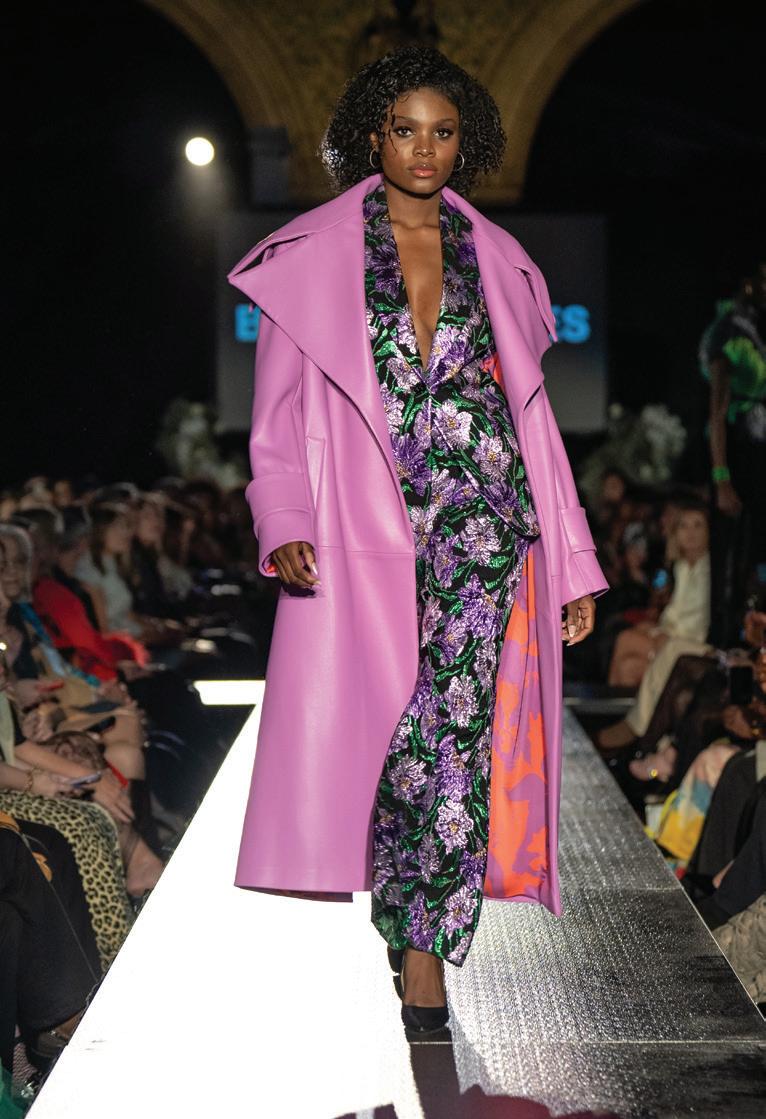
After producing over 25 notable fashion events in the city since the Curio’s inception— including appearances by world-renowned designer Cynthia Rowley and photographer Nigel Barker and events in landmark venues such as the Cultural Center and the Museum of Science and Industry—Gerard diplomatically stated over email: “We wish Chicago Fashion Week success, but we do not believe its current leadership can deliver on the original vision of establishing a true fashion week capable of positioning Chicago as a fashion capital. At The Curio, we remain committed to developing innovative ideas and programming that can elevate Chicago fashion to the level of recog-
Driehaus Museum, featuring a conversation with Melissa Beste, CEO of Akris, and designer Jacques Agbobly. And of course, we’re elated to welcome back cornerstone events such as Runway LatinX on October 18, which uniquely blends fashion, gastronomy, mixology, and live entertainment,” Lydon says.
As for Gillette and Gerard, Lydon maintains that they have their own organization, the Curio, and that both the Curio and Chicago Fashion Week are working to support Chicago’s fashion community. “Chicago Fashion Week sent a camera team to the Curio’s event, Fashion’s Night Out, this summer, and the Curio lists Chicago Fashion Week events on its website,” Lydon explains.
CITY LIFE
With so many programs on this year’s schedule, the real challenge may be deciding where to begin. Highlights like Denim After Dark (hosted by Chicago Fashion Coalition and the Museum of House), Mayan Textiles: Art, Tradition, and Technique (presented by the Apparel Industry Board, Inc. at the National Museum of Mexican Art), and the major clothing swap presented by Chicago Fair Trade will be at the top of my list. I’m also eager for the second edition of Threaded Stories, a showcase that thoughtfully uplifts each designer’s unique voice, organized by Pam Kendall of Cloth + Home boutique and curated by fashion
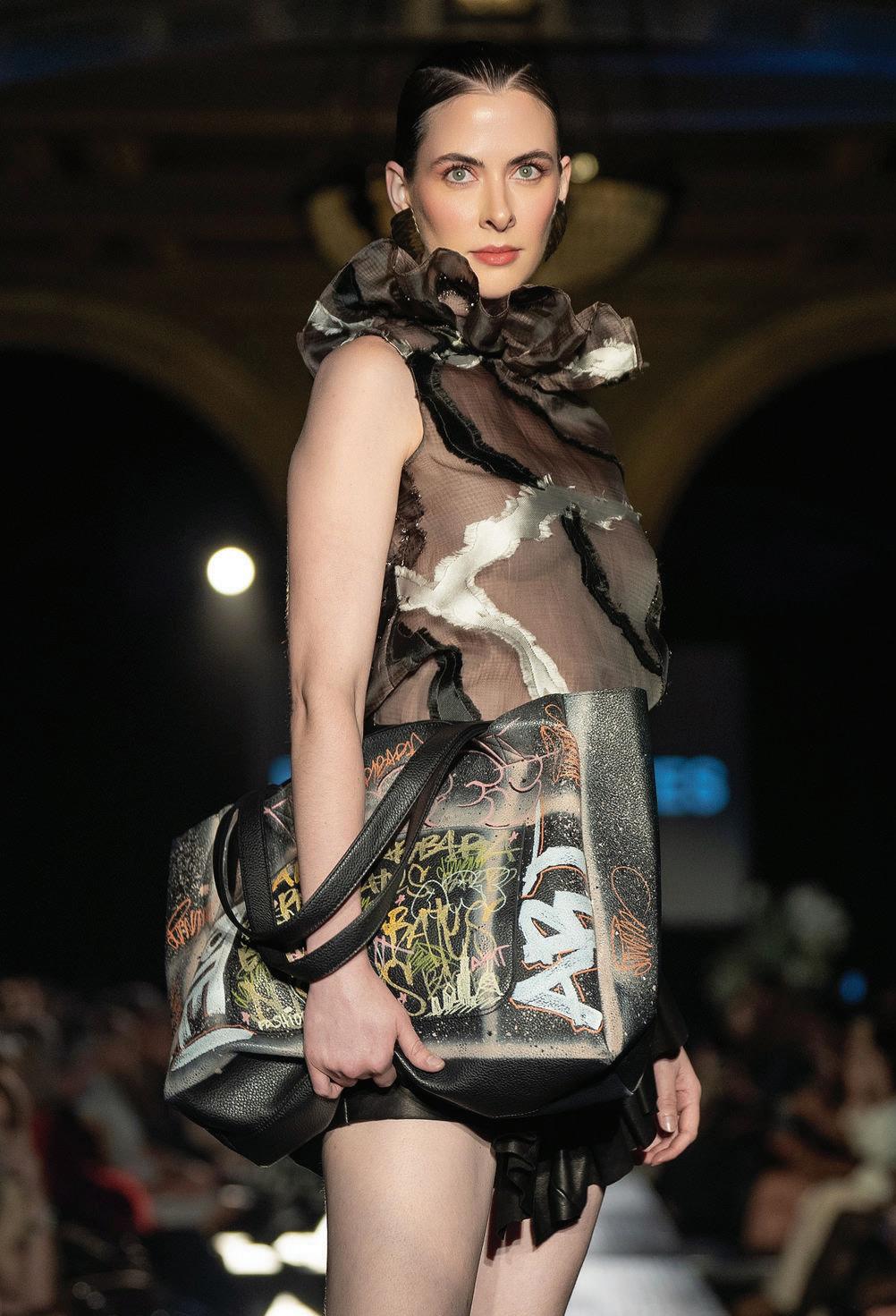
Anna
Taking place at the historic Woman’s Club of Evanston, the show will be followed by a shopping event where all 12 independent designers will sell their creations. In the spirit of inclusivity, live audio description of the designs will also be provided for members of the Chicago Lighthouse, an organization that supports blind and visually impaired communities. Despite unfortunate conflicts arising in a scene that needs all the unity it can get, there is still a vibrant Fashion Week ahead—one that deserves our full support for the talented yet often overlooked local designers at its core. v
m letters@chicagoreader.com
NEWS & POLITICS

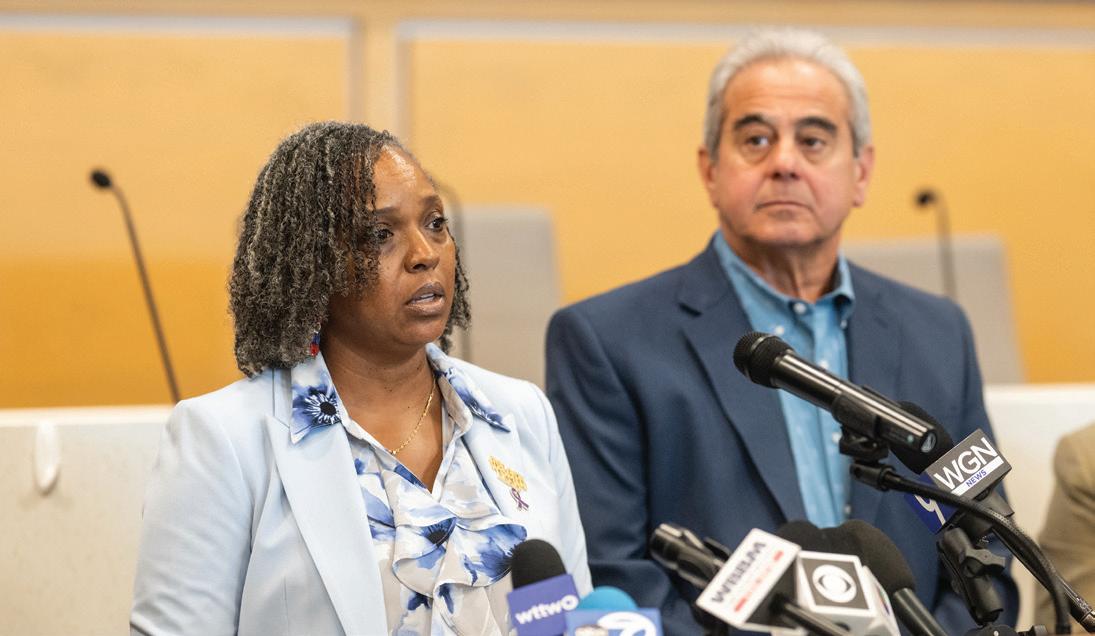

Feds target unhoused Chicagoans
Since September, at least six unhoused Chicagoans have been abducted by federal agents. That number is likely higher, but the social invisibility and isolation already faced by people experiencing homelessness make their disappearances harder to track.
“While we have heard several reports that we are working to verify, we don’t have an exhaustive list or count of all incidents involving people experiencing homelessness,” wrote Melissa West, sta attorney and Equal Justice Works fellow with the law project of the Chicago Coalition to End Homelessness (CCH), over email Monday. But CCH, alongside other homelessness service providers, is investigating four additional raids, resulting in the abductions of approximately 19 people:
• Over the weekend of September 27–28, 11 unhoused people were detained in Logan Square, according to a tip the organization received. “We are continuing to investigate,” wrote West.
• Two independent eyewitnesses told street outreach workers that at least
four unhoused people were arrested by federal agents around Belmont and Kimball early in the week of September 29.
• CCH was also notified of a raid targeting unhoused people who were “congregating in a public space” near Milwaukee and Belmont on Thursday, October 2.
• “We have also heard of the possible detainment of four individuals at an encampment in Cicero,” wrote West.
Two individuals were taken from outside a shelter in Budlong Woods on September 25 but were later released; the four snatched from outside a shelter in Bronzeville on October 1 remain in custody, their status unknown.
“We are encouraging anyone who has information, or believes that they witnessed these raids at the locations mentioned above—or any other similar incidents—to reach out,” West wrote. CCH’s federal response hotline is 312-641-4148; witnesses may also call the Illinois Coalition for Immigrant and Refugee Rights at 855-435-7693. —KATIE P ROUT
Free speech, when we say so
For weeks, federal agents have needlessly and violently ramped up attacks on antideportation protesters, legal observers, and journalists alike outside the U.S. Immigration and Customs Enforcement (ICE) detention center in Broadview, Illinois. But rather than address the hordes of masked soldiers running roughshod over civil liberties, state and local leaders are instead seeking to further constrain protesters.
Late Thursday, October 2, the Illinois State Police (ISP) and the Cook County Sheriff’s Office announced that a “unified command” would take over crowd control from the mostly hands-off Broadview Police Department
During protests that have occurred weekly on Fridays and Saturdays, ISP and sheri ’s police last week corralled protesters into designated “protest areas” that were enclosed by concrete barricades and arrested people who refused to leave the public street.
Though Illinois law prohibits police from cooperating with federal immigration enforcement efforts—and defines cooperation
as including “establishing a security or tra c perimeter surrounding such operations”— state troopers and local police joined dozens of militarized U.S. Border Patrol agents in brutalizing protesters and pushing them off the street. Cops from multiple suburban police departments then joined federal agents in forming a traffic perimeter outside the detention center to allow vehicles driven by ICE agents to come and go.
Then, on Monday, October 6, Broadview mayor Katrina Thompson signed an executive order that limits protests outside the ICE detention center to the designated area between 9 AM and 6 PM. Thompson’s order claims Broadview is “under siege” and points to “the recent escalation of violence by ICE” as reason to “temporarily place time restrictions on protests.”
I guess free speech only applies during business hours. —SHAWN MULCAHY
ICE at county courthouses
Fourteen civil rights and social services organizations are asking Cook County chief judge Timothy Evans to bar federal agents from making civil arrests without a judicial warrant or order at county courthouses.
The coalition, led by the Law O ce of the Cook County Public Defender, submitted a petition on October 1 asking Evans to issue a court rule barring civil arrests in all areas of county courthouses, including public entryways, driveways, sidewalks, parking areas, and nearby public transit stops.
In recent weeks, federal agents have arrested multiple people in or near county courthouses. During the first three weeks of September, federal authorities entered at least four separate courthouses, according to the public defender’s o ce.
“Legal and social service organizations in Chicago are deeply concerned about ICE activities in Cook County courthouses,” the petition reads. “They worry about clients who have had to forego participation in court proceedings— sometimes their own—out of fear of being harassed, detained, and arrested by ICE at, near, or on the way to and from County courthouse buildings. And they worry about the impact ICE has had on access to justice in Cook County writ large.”
—SHAWN MULCAHY v
Make It Make Sense is a weekly column about what’s happening and why it matters.
m smulcahy@chicagoreader.com
NEWS & POLITICS
LABOR PAINS
Illinois rideshare drivers organize for labor rights
The Illinois Drivers Alliance brings Uber and Ly drivers together to fight for better working conditions.
By DEVYN-MARSHALL BROWN (DMB)
Lori Simmons started driving for Uber and Lyft in 2014, two years after the rideshare apps launched in Chicago. Simmons had been fired from her human resources job, and a friend approached her with wide eyes. “Listen, this is paying and you should try it,” her friend said. “I think you’ll be much happier than you were at the o ce.”
And she was. As a driver, Simmons and others kept 85 percent of what they earned, which easily replaced the $50,000 she made at her previous job. She saw herself among a group of drivers who left their jobs to temporarily drive for rideshare full-time. But within a few years, the rideshare industry changed dramatically. Simmons interviewed for new jobs, but employers never hired her back into HR. Around 2015, she realized it would be harder than she expected to go back to the work she used to do.
“I think a lot of people just get trapped there,” Simmons says. “[Having] no education on these things made us prime for Uber to just roll in here and create an unregulated taxi system that everybody just accepted and now is unhappy with. It actually was a terrible idea.”
Over the past decade, rideshare apps have failed to respond to issues of driver safety, shrinking pay, secrecy around fare breakdowns, account deactivations, and a work experience where there’s no one employees can reliably contact when they need help. In response, drivers across the country are battling Uber and Lyft state by state, urging local governments to regulate the rideshare industry. In Illinois, it’s illegal for the 85,000 drivers in Chicago and the 100,000 across the state to unionize. But that is not stopping thousands of drivers from fighting for fair working conditions.
Uber drivers don’t have a fixed workplace or directory, so by nature they’re hard to find. But Simmons, as lead organizer of the Chicago Gig Alliance and her peers in the statewide Illinois
Drivers Alliance, made do and, starting in 2017, initiated thousands of conversations with Chicago drivers to determine their concerns. This culminated in a failed attempt to pass the “FairShare” ordinance, which sought to empower the Chicago O ce of Labor Standards to regulate working conditions for rideshare drivers. The Illinois Drivers Alliance, working hand in hand with Service Employees International Union (SEIU) Local 1 and the International Association of Machinists and Aerospace Workers Local 701, is now turning to the Illinois General Assembly to pass state legislation that gives rideshare drivers the right to unionize.
Tony Solt ran into Chicago Gig Alliance members at O’Hare International Airport while he was in the middle of a shift driving for Uber. When the app arrived and usurped the city’s taxi industry, Solt made the jump, and he’s seen the decline in worker pay firsthand. He was happy with his job as a taxicab driver of 15 years when Uber petitioned him and other taxi and limo drivers to join Uber Taxi in 2012, where the app connected patrons to their services. The company gave Solt and other taxi drivers cell phones, and Solt says he made good money. Even when Uber Taxi was replaced by UberX in 2013, meaning Solt now had to drive his personal vehicle, he says the money was good. But as time went on, the company acquired tens of thousands of new drivers, put taxi fleets out of business, and paid drivers like Solt less and less of the passenger fare. “When I drove taxi, I was able to support my family, send the kids to school,” Solt says. “But today, with Uber, you cannot [support] even one person making [this]. With Uber, you gotta work every day, 12 hours a day, and it’s very tough. It’s very hard to make good money.”
Before 2022, Uber paid rideshare drivers per minute and per mile, like the taxicab drivers before them. Sometimes, Uber
drivers could earn double or triple the fare in “surge” areas, where demand for rides outpaced supply. Today, Uber instead uses an up-front pricing model, where an algorithm determines both the pay for the driver and the passenger fare. Multiple studies from top universities show that fares are no longer based on distance traveled and user traffic, but on how much people are willing to pay and how little nearby drivers are willing to accept. The UC Berkeley Labor Center found that the typical passenger driver in Chicago was earning $10.85 an hour in January 2022. In his article “How Uber Became a Cashgenerating Machine,” Columbia Business School professor Len Sherman shares that the launch of up-front pricing in 2022 has brought Uber $12 billion in surplus at the expense of drivers and riders alike.
car, multiply that by one thousand because your car is going to be a disaster. . . . You have to have backup plan after backup plan, because there is no backup plan to protect you when you do this work.”
The first thing Sandy Rosko’s peers told her when she joined rideshare driver forums online was not “hello” or “welcome” but “get a dashcam.” She regrets not listening to that advice sooner. Rosko began driving for rideshare on Halloween of 2024, after a decade of isolating because of family medical trauma and COVID. She couldn’t return to her job in the IT industry because of a back injury, and she couldn’t find a therapist to help her deal with socializing with people again, so she figured driving for Lyft could be both: a form of self-therapy and physically accessible work. “I say something silly or stupid or wacky, I’ll never see that person again,” Rosko says. “I can relearn my social skills.”

One of the main features of the job is that rideshare companies consider their drivers to be independent contractors. Simmons and others have to spend their own money on car maintenance, gas, and other business costs. “You lose money while you’re doing it,” she says. “Anything that can go wrong with your
Ten days into her new job with Lyft, Rosko says she was sexually assaulted by an inebriated passenger. During the ride, he leaned forward and began touching her. She says she had to repeatedly elbow him to sit back. “I turned on my emergency flashes, and I was flicking my lights the entire ride, trying to get somebody’s attention, because the roads were deserted. Around, all the stores were closed, so I didn’t feel safe pulling over.”
When she approached his stop, a highway truck weigh station, she punched the brakes and took a sharp turn, using the momentum of the car to throw him backward. Rosko jumped out of her car and implored truckers to call the police. When the police came, they didn’t do anything.
Uber and Lyft have a partnership with the security company ADT. When drivers press the “emergency” button on their Uber app, the ADT call center connects directly to their car’s Bluetooth speaker. Rosko says, “The entire time I was trying to hit that ADT button, but it wasn’t doing anything.” Rosko sat in her car at the truck stop and filed a report to Uber about what happened. A chatbot asked her to provide details and asked if she was physically injured, and she said she wasn’t. “Thanks for the information,” the bot said, before closing
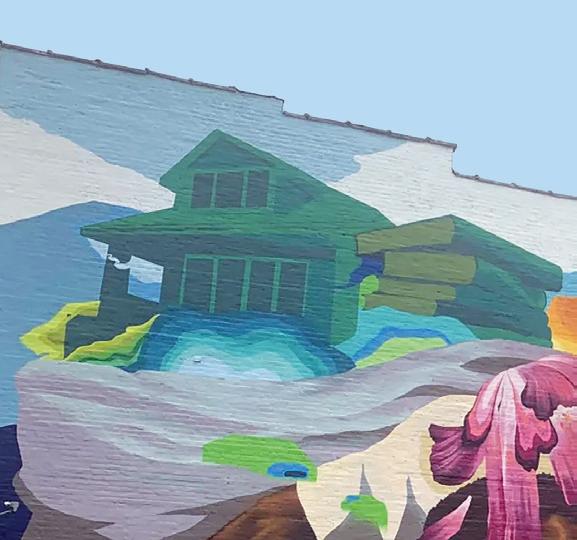
Southeast Spotlight: Kreating Young Minds Academy
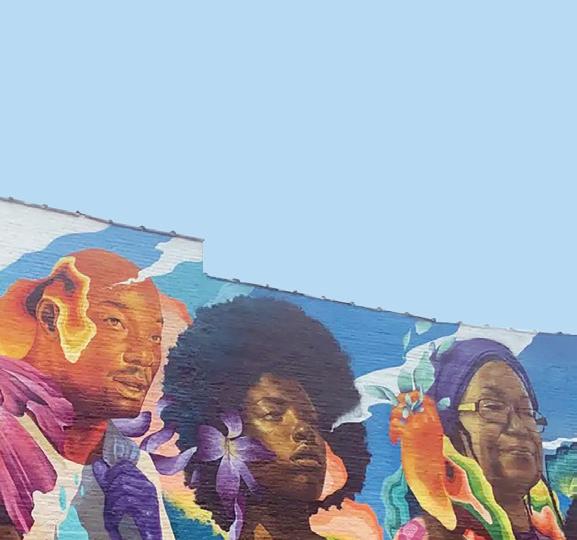

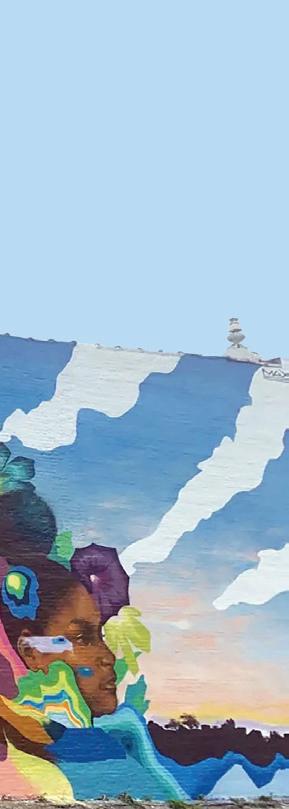

Cultivating curiosity, imagination, and confidence for young children
Powered by play and a STEAM-driven (Science, Technology, Engineering, Arts, and Mathematics) educational model, Kreating Young Minds Academy is here to transform the approach to early childhood education. Founder and owner Keshanna Yvette Milsap took a leap from a long career supporting Chicago Public Schools, and with her extensive experience and her commitment to bettering the lives and futures of children, she began to lay the foundation for Kreating Young Minds. The southeast-side academy for youth is eager to welcome students and their families; despite being a new business and a new center for innovative education, Milsap’s passion and commitment bring a fresh, forward-thinking energy to childcare.
Kreating Young Minds Academy, as it’s the community that made Mislap into the woman she is today. In a rapidly evolving world that is growing ever more serious, there’s no place like home to give back to and reciprocate that early life nourishment.
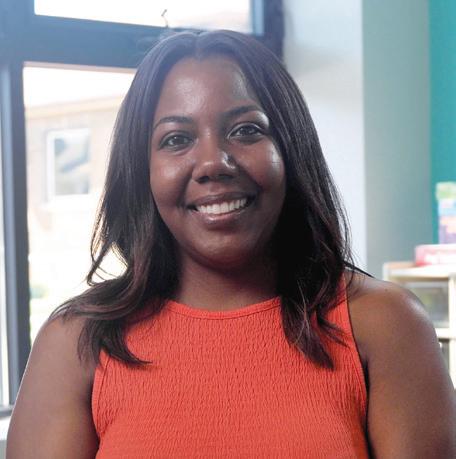
Milsap proudly stated, “Kreating Young Minds Academy is more than a daycare—it’s a space where imagination meets education and where every child is seen, supported, and celebrated.”
When speaking with her, an unstated yet obvious pillar of her approach to business and education is kindness. As she seeks to establish her business in the coming months and years, Milshap and Kreating Young Minds Academy are keen on cultivating local support and buy-in.
NEWS & POLITICS
continued from p. 7
out the ticket. “I’ve yet, to this day, to receive a human phone call from somebody asking me if I’m OK.” By that weekend, Rosko had spent $150 for a dashcam, pepper spray, and a window-breaking hammer. “I have no defense against a gun or a knife against my neck or anything, which is why I’ve had to draw red lines and choose areas [of the city] that I refuse to go to for any reason.”
Rideshare drivers have witnessed a handful of their colleagues in Chicago fall victim to violent robberies and shootings over the past few years, so it’s no surprise that safety is a core labor issue for the Chicago Gig Alliance. To register as a driver for Uber, applicants must pass a background check, upload photos of themselves and their driver’s licenses, and provide proof of residency. But to hail an Uber, passengers don’t even have to provide their real name or a photo. This makes workers feel vulnerable. “I’m showing up to pick somebody up,” Simmons says, “[and] all I have is ‘Bae’ or their name is ‘Mom.’ One guy’s name was ‘AK-47.’ I was like, are you serious?”
Every driver who spoke with the Reader complained of having to make it through several
“There is no backup plan to protect you when you do this work.”
layers of bots before reaching a human when immediate help is needed. “The whole process just leaves you feeling like, am I even a human? This is my job,” she says, “and I cannot ask a person a single question about it.” When a driver is removed from the rideshare platform—or deactivated—it’s akin to getting fi red, except there’s no boss to level with the driver or explain what they did wrong, and there’s no one to appeal the decision to. As rideshare fares increase, Simmons says, passengers make complaints against their drivers as a cost-saving method. What one passenger thinks is a bad review and $20 off a ride actually results in drivers losing their only source of income. “Over the course of three years, over 20,000 drivers got deactivated in the city of Chicago, and so many of them don’t even know why,” she says. It happens so frequently that the Chicago Gig Alliance put language in the FairShare ordinance asking the city to fund legal representation for deactivated drivers. Although the ordinance failed, two wins came out of the effort: First, Uber and Lyft signed a neutrality agreement saying they would not interfere with statelevel rideshare drivers’ unionization legislation. Second, the city established a $250,000 outreach fund to help drivers with legal representation and support when their accounts are deactivated.
Their motto, “Igniting bright minds through meaningful discovery,” exemplifies how fun and games can have a purpose. Mislap is fueled by seeing kids develop their own sense of confidence. Creating a safe, supportive, and enriching environment is essential, and there was no better place than Avalon Park to open
Curious to get more involved with intention? Donating books, art supplies, or STEM materials to enrich their learning environment and volunteering for community-oriented educational events or story-time days are the perfect way to contribute to Kreating Young Minds Academy.
KREATING YOUNG MINDS ACADEMY
1904 East 87th Street
Monday through Friday 7AM-6PM | kymacademy.org @kreatingyoungminds | 773-902-7544 | info@kymacademy.org





Maurice Clark was deactivated from Uber for allegedly falling asleep at the wheel; from Lyft, for drinking (he doesn’t drink); and from DoorDash, for committing fraud (DoorDash won’t tell him what sort of fraud he’s committed). Without the apps to fall back on, he primarily works as an Instacart grocer.
“I’ve been really interested in just working for myself because of past experiences. I’ve had it with the rideshare companies, Uber, Lyft,” Clark says. “Because a lot of business owners will use you, especially if they know you’re passionate about what you do.”
Rideshare drivers have a quasiemployment status that complicates their route for organizing. They are not considered employees, even if they work full-time hours. Many drivers don’t want to be considered employees because they rely on the flexibility the job gives them to work odd hours for various shift lengths. It’s di cult to organize around the idea of granting drivers the same labor rights as full-time employees when, for many, full-time employment isn’t the goal. But different city and state court rulings have addressed the question in different ways. In New Jersey, rideshare workers are now considered employees when filing taxes or collecting workers’ compensation or unemployment benefits. In Massachusetts, a ballot initiative, passed in the fall of 2024, allows rideshare drivers to form independent unions and bargain collectively while remaining classified as independent contractors.
Veronica Avila, director of worker campaigns at the Action Center on Race and Economy, says Uber helped pioneer a complete corporate capture of the political system, where the company’s business arm relies on using political influence to avoid the obligations of traditional employers by painting itself as a tech company. “They’re legislating loopholes that push costs o to drivers and push drivers to take all these risks for all the wages,” Avila says. Companies like Uber and Lyft have been shown to undermine local movements attempting to regulate them by spending hundreds of millions on lobbying campaigns. In California, state lawmakers passed legislation in 2019 that reclassified rideshare workers as employees instead of independent contractors. Uber and Lyft spent a record-breaking $224 million on advertising to pass a new ballot initiative, Proposition 22, that exempted their companies from the law. In Minnesota, a group of rideshare drivers won sweeping changes in the state legislature related to protections and wage standards. But the governor vetoed the proposal after Uber threatened to leave the state if it passed. “It’s a demonstration of how politically strong these corporations are,” Avila says. “They get to strong-arm elected o cials. They threaten to leave the market.”
NEWS & POLITICS

C.J. Macklin, Lyft’s communications director, writes in an email that “drivers are essential to our purpose” and states that the company has been meeting with advocates to address several of their concerns. “This includes an earnings commitment that ensures drivers always make at least 70% of the weekly rider fares after external fees, an improved deactivation appeals process to make things more transparent and a rider verification program to improve safety.” Uber did not respond to the Reader ’s requests for comment by press time.
Robert Bruno, a professor at the University of Illinois School of Labor and Employment Relations, says the wrestling over regulations in the rideshare industry is not unlike any other effort to collectivize worker power in negotiations with large, wealthy employers.
The garment industry was unregulated well into the 1920s. The workforce, made up largely of immigrant women, was paid to make clothes by the piece. Garment workers first worked in their homes, then moved into factories where they had quasi-employment relationships with textile firms. But the textile companies weren’t bound by any regulations around safety protocols or working condi-
FOOD & DRINK
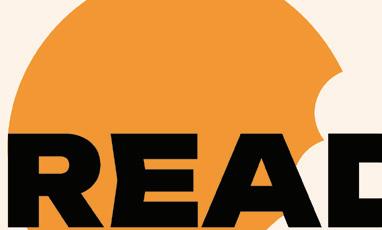


The front door at this Wicker Park cafe is the event horizon. Pass through and your eyes are instantly drawn to the pastry case—specifically to a squat doughnut, draped in a glossy auburn shell. It pulls you closer, at once reflecting and absorbing you, its luminosity affirming the illusion of your instincts, its depths denying your will to resist.
Staring into this caramel abyss for the first time, you’d never fathom the yeasted infinity within.
“We were just trying to think about ways that fl avors could overlap and to bring in more textures,” she says, downplaying the cosmic dark energy she’s harnessed.
Employing the cafe’s buttery brioche dough, the doughnut is shaped, proofed, and fried before being piped with house chai-spiced pastry cream and dipped in a thick sugar bath caramelized just to the boundary of burning. It cools and hardens. You can play paradiddles on its candied veneer. You bite and it crunches over the soft mantle, yielding to the creamy core, perfumed with black pepper, clove, cardamom, cinnamon, ginger, and star anise.

It came to Reema Patel in a dream. All of the pastry chef’s creations here are informed by a synthesis of Filipino and Indian flavors. But this doughnut was among the first she created and among the cafe’s most popular. Through friends, she grew up eating a lot of leche flan, the classic Filipino crème caramel. Masala chai is an Indian staple, and at the cafe, they make their own spiced black tea.
tions. It wasn’t until the 1911 Triangle Shirtwaist Fire in Manhattan, where 146 garment workers were killed in one of the deadliest workplace disasters in history, that enough public outrage led to major reforms. Within three months, New York’s governor created a commission to investigate working conditions in the state’s two thousand factories. Over the next year, the state passed more than 30 new labor laws addressing sanitation, fire safety, and other employment rules and created a state department of labor to enforce them. Employers have always refused to recognize the rights of workers to organize and have historically used all sorts of resistance, including legislation, elections, and legal challenges, to fight o worker power. “It’s new wine in old
This textural contrast isn’t typically encountered in the corporeal doughnut world. But don’t panic. Fear melts once you submit to the inevitable truth: You don’t consume the chai leche flan doughnut. It consumes you. —MIKE SULA SARIMA CAFE 1924 W. North, $6, sarimacafe.com v
Reader Bites celebrates dishes, drinks, and atmospheres from the Chicagoland food scene. Have you had a recent food or drink experience that you can’t stop thinking about? Share it with us at fooddrink@ chicagoreader.com.
bottles,” Bruno says, “and we just repeat it over and over again in American history.”
If the work is so hard, why do people keep driving? Many full-time drivers Simmons meets are immigrants or people with health issues who can’t or don’t want to work traditional jobs. The vast majority of drivers are people who don’t see themselves as drivers— just folks picking up temporary work—until they realize no other work is available. But the driver experience is not black-andwhite. “I love driving people around,” Rosko says. “I love meeting new people every day, and that’s why I keep on doing it, despite all the battles that we have to fight.” v
ARTS & CULTURE
Her grandmother’s hands
Summer Coleman reclaims materials and cultural narratives through sculpture.
By KERRY CARDOZA
Chances are, you’ve seen Summer Coleman’s graphic design or branding work. She designed the bold, glossy menu and window graphics at Bronzeville Winery. She made the flowing blue branding for Lieutenant Governor Juliana Stratton; an updated, inclusive logo for Brave Space Alliance; and the vibrant design of the Hazel Crest Creative Arts Center in Hazel Crest, Illinois. She made the CTA advertisements for artist Amanda Williams’s epic Redefining Redlining project. But you may be unfamiliar with her art practice, which has recently taken a new direction.
Though the Chicago native received her bachelor’s degree in studio arts from the University of Illinois Chicago, she’s spent most of her career—about two decades—working in design. The career choice was largely due to the time (and financial) restraints of being a parent. Coincidentally, it was her role as a caretaker that led to her new series of soft sculptures. Coleman is part of the 2024-25 Wild Yams seed cohort, an artist residency for Black mothers and caretakers. At the start of the residency, Coleman decided to get a sewing machine and become reacquainted with the art of sewing.
“This work is centered around my grandmother and my remembrance of her being a
seamstress,” Coleman said. The artist recalled sitting around a table with her grandmother, a community seamstress who raised her, and not paying very close attention to the sewing lessons she was getting. “None of this is quite perfect,” Coleman said, gesturing toward the various in-process sculptures in her studio. “But that’s the point.”
Coleman’s series was inspired by contemporary conversations around topics like religion and fertility, and with them, she seeks to reclaim stolen narratives about African religions. “A lot of people don’t remember, or don’t even know, the history of these things,” she said. “So just trying to give us back our history.” Using recycled or reclaimed fabric in bold colors and lively patterns, Coleman’s sculptures reference African fertility goddesses and deities. Some are oversize faces that hang on the wall, others depict full-figured bodies. And Coleman’s deities aren’t meant to just be looked at—her viewers will be able to interact with them.
“God—usually, he’s up there on an altar,” she said. “It’s a little di erent with dolls and things like that. . . . You get to touch them, pose them, hug them, do di erent things.”
She showed me the beginning of what will be a massive Ashanti akua’ba doll, traditionally used as a fertility charm, sewn from fabric scraps and double-stu ed with soft filling. Its head is composed of bands of bright orange fabric, which delineate large patches of blue and black and purple patterns. When finished, it will be about six or seven feet long and sit on the floor; visitors will be able to interact with the doll at a forthcoming Wild Yams exhibition at Co-Prosperity, slated for mid- to late-2026.
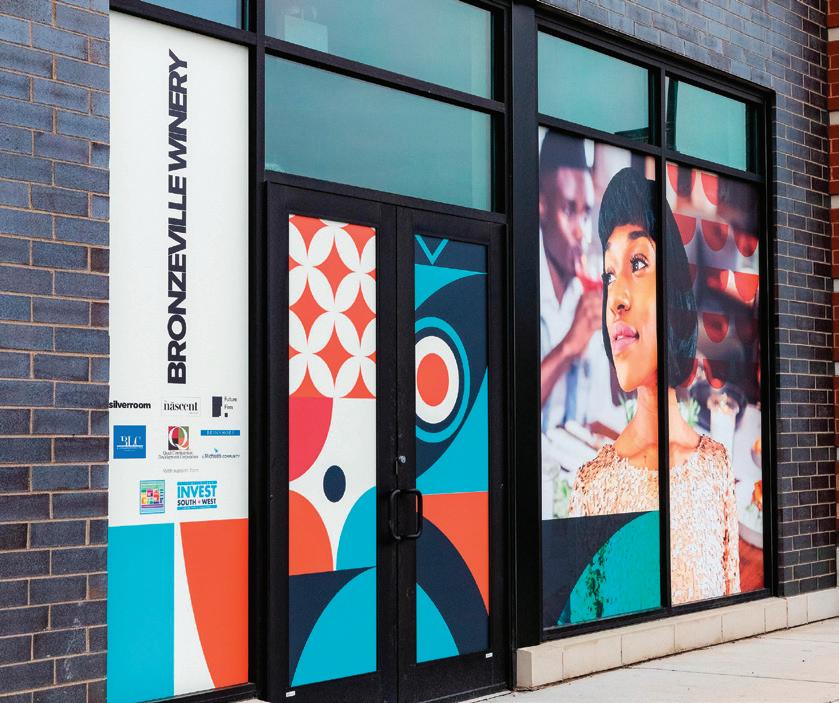
For Coleman, it’s important not to use new materials, citing the everworsening problem of the West’s used clothing leading to massive environmental issues in Africa, particularly in Ghana, which receives around 15 mil-

lion used garments a week. To design one of her sculptures, Coleman sketches out a design and then tries to piece together fabric to see what works well together. For her, it’s an especially exciting challenge to try to figure out how to use small or irregularly shaped pieces. “Anybody can use bolts of fabric,” she said. Her design background also helps fuel the new sculptures, as she thinks about how to share her research and additional context about the pieces with her audience. She’s considering making a zine so people can continue learning about the dolls.
She credits Wild Yams with helping her find her way back to sewing. “Wild Yams is amazing,” she said. “This has been the best residency of my life—and I didn’t really know that I could sew this well. So I’m like, ‘OK, maybe this is something I could be doing.’”
Over the summer, the cohort spent a weekend at ACRE’s residency site in Wisconsin, working on their projects—alongside their kids. Coleman’s daughter, an artist and pho-
tographer, was reluctant to go until a phone call from Wild Yams founder Wisdom Baty changed her mind. “So much community care,” Coleman said.
Reflecting on her twenty-odd years as an artist, Coleman is struck that she had never incorporated sewing before. “I’m getting older—I hate to say that—I’m 46. . . . And as I was introspecting on the history of my matriarch and who raised me and what did I used to do? I love sewing. I always wanted to get myself a sewing machine,” she said. So when she was accepted into the residency, she decided to go for it. “I’m always in front of my computer, so let’s do something with my hands. Let’s do something different. . . . I was pleasantly surprised. I was like, ‘OK.’ These are the first things I was doing, learning. So I was remembering. This is the presence of that. I call them channels—I’m channeling the remembrance of [my grandmother] with these.” v
m kcardoza@chicagoreader.com
ARTS & CULTURE
EXHIBITIONS
R‘Mark Me, Too’ is threaded with care
At HPAC, five artists employ mark-making to blur physical and metaphysical constraints.
You rememory me? Yes. I remember you. You never forgot me? Your face is mine.
-Beloved, Toni Morrison
This brief excerpt tells the story of a family once torn apart, but reunited to understand deeper. It reads as a three-person chorale in one tone, the lyrics intuitively spilling from each character’s mouth. In many ways, this exhibition, curated by Rikki Byrd, conveys a similar feeling. Its title references a line in Toni Morrison’s Pulitzer Prize–winning novel Beloved, where the mark serves as a signifier, connector, and portal. The exhibition serves as an active site of what Morrison called “rememory,” or a haunting collective memory, employing mark-making to blur physical and metaphysical constraints as a way of uncovering hidden aspects of the self. Here, five voices join together in a chorus, pleading, “Mark Me, Too.”

ture wrapped in a matching jump rope that cascades off a figure into sparkly black sand; three perfectly positioned sculptures standing tall and upright despite and because of the marks; and a pit of sand with a gold bust emerging from it, scuffed yet still whole—convey the completely unshy display of play, putting on, and returning to.
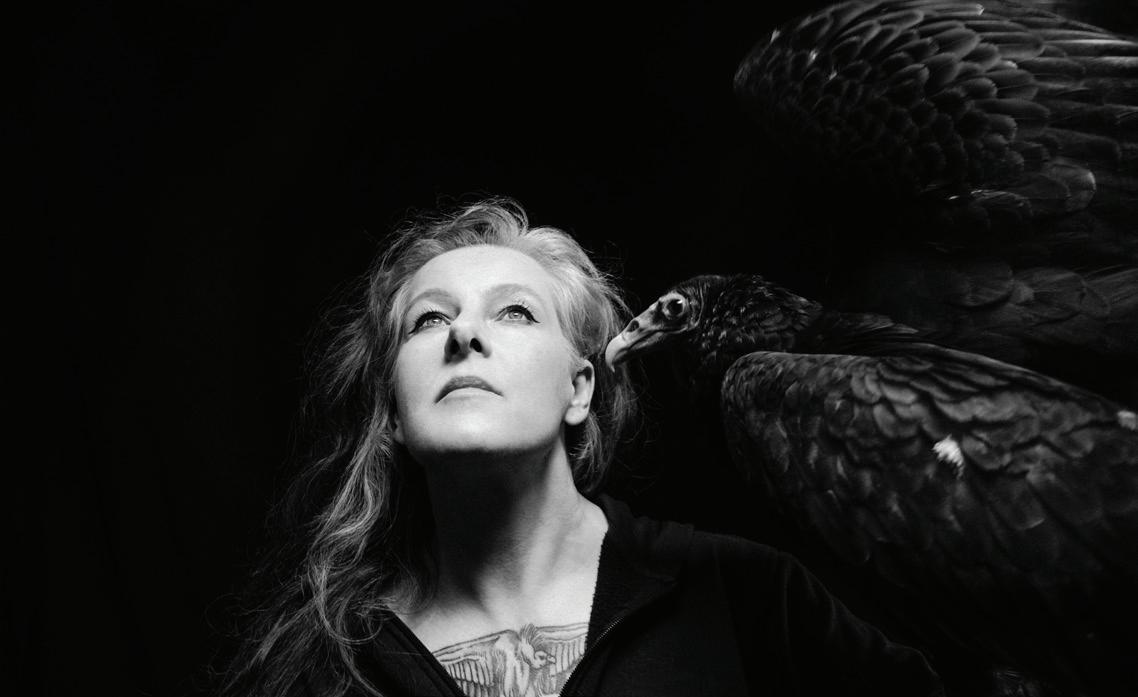
Upon entry, you encounter Ciarra K. Walters’s Fragility Suits, a series of garments made from flesh-toned pantyhose lined against the wall, legs and arms extended in surrender. Each suit is embellished with brown and white broken eggshells, the tiny shattered remnants forming a small pool beneath the figures on the floor. In Eileen’s Daughters, a film dedicated to her late mother, Walters and her siblings join in a sort of ritual—hugging each other and pressing their bodies to the wall, relinquishing the tiny eggshell fragments from the suits. On the wall opposite the suits is a vitrine holding delicate, pastel-toned paintings designed with her original technique of turning the star material—eggshell—into a painting paste. Here, the artist surrenders to the mark and showcases a constellation of rediscovering the self.
Through the “Mark Me, Too” entryway, Lisa DeAbreu’s use of archival family photos conveys the mundane familiarity of home while also concealing that which is personal to those depicted in her large paintings, made on tablecloths and covered by white doilies designed to mimic heart-shaped wrought iron gates. In the way you might only hear whispers of a conversation as you pass the home on a Saturday a ernoon stroll, the doilies act as an obstruction to keep private what belongs to the family. The doilies and the wrought iron gates are spotlighted in the sculpture Forgotten and Forseen, juxtaposing the warmth and comfort of home with the troubles that exist within lineages.
Continuing on the theme of lineage, Lola Obgara’s sculptures explore stages of Black girlhood as she interrogates her own identity—an excavation of what was buried to understand the multiple genealogies within Black femme cultures. Sculptures show what is held within Black girlhood and where its influences land. Three distinct installations—a bubblegum pink sculp-
In a continued interrogation of girlhood—including motherhood and “daughterhood”—artist Lex Marie obscures the meaning and colors of the American flag. Most stunning is the use of the color red, which in the flag represents “bravery and valor,” qualities that are unjustly thrust upon Black youth. Red bloodstains flicker across a flag entitled It’s a Girl, completely flipping the significance of this color. From the Root to Split Ends is held together by braided ropes with pink beads at the bottom, in a striking acknowledgement of the forgotten stories of Black innocence, prompting us to question whose lives we mourn, what is behind the allure of freedom for all, and at what cost.
The sounds of Seychelles forests, recorded by artist Natasha Moustache, lure visitors into a serene cove. In the Wake (American Dream) and Between You and Me photographs of their mother submerged in water, along with L’orkid Tantin (Auntie’s Orchid) and Fri Zonm Saz (Fruit of the Wise Men), speak to rememory through lineage, this careful tearing apart to understand the cycle of becoming. The photographs and the lush flora of Seychelles surround a photo album—an archive Moustache created to further their study on the island—which holds intimate explorations of their experiences and politely requests viewers to don white gloves before exploring.
This exhibition is a five-part heteroglossia of multidimensional histories that inform each artist’s identity. The cohesive curation allows viewers to flow through the exhibition as if reading a chapter book with alternating yet threaded narratives at every turn. The vulnerability of each artist and the fragility of their stories is captivating, and instead of feeling on edge about disrupting the fragility, the tone of “Mark Me, Too” is tempered with care. —RACHEL DUKES “Mark Me, Too” Through 12/14: Mon–Thu–Sat 10 AM–7 PM, Fri 10 AM–4:30 PM, Sat 10 AM–4 PM, Sun 11 AM–4 PM Hyde Park Art Center, 5020 S. Cornell, hydeparkart.org/exhibition-archive/mark-me-too-black-contemporaryartists-and-the-making-of-marks, free v
THE SALT SHED THE SALT SHED THE SALT SHED THE SALT SHED THE SALT SHED THE SALT SHED THE SALT SHED THE SALT SHED THE SALT SHED THE SALT SHED THE SALT SHED THE SALT SHED THE SALT SHED THE SALT SHED THE SALT SHED THE SALT SHED THE SALT SHED THE SALT SHED THE SALT SHED THE SALT SHED THE SALT SHED THE SALT SHED THE SALT SHED THE SALT SHED THE SALT SHED THE SALT SHED THE SALT SHED THE SALT SHED THE SALT SHED THE SALT SHED THE SALT SHED THE SALT SHED THE SALT SHED THE SALT SHED THE SALT SHED THE SALT SHED THE SALT SHED THE SALT SHED THE SALT SHED THE SALT SHED THE SALT SHED THE SALT SHED THE SALT SHED THE SALT SHED THE SALT SHED THE SALT SHED THE SALT SHED THE SALT SHED THE SALT SHED THE SALT SHED THE SALT SHED THE SALT SHED THE SALT SHED THE SALT SHED THE SALT SHED THE SALT SHED THE SALT SHED THE SALT SHED THE SALT SHED THE SALT SHED THE SALT SHED THE SALT SHED THE SALT SHED THE SALT SHED THE SALT SHED THE SALT SHED THE SALT SHED THE SALT SHED THE SALT SHED THE SALT SHED THE SALT SHED THE SALT SHED THE SALT SHED THE SALT SHED THE SALT SHED THE SALT SHED THE SALT SHED THE SALT SHED THE SALT SHED THE SALT SHED THE SALT SHED THE SALT SHED THE SALT SHED THE SALT SHED THE SALT SHED THE SALT SHED THE SALT SHED THE SALT SHED THE SALT SHED THE SALT SHED THE SALT SHED THE SALT SHED THE SALT SHED THE SALT SHED THE SALT SHED THE SALT SHED THE SALT SHED THE SALT SHED THE SALT SHED THE SALT SHED THE SALT SHED THE SALT SHED THE SALT SHED THE SALT SHED THE SALT SHED THE SALT SHED THE SALT SHED THE SALT SHED THE SALT SHED THE SALT SHED THE SALT SHED THE SALT SHED THE SALT SHED THE THE SALT SHED THE SALT SHED THE SALT SHED THE SALT SHED THE SALT SHED THE SALT SHED THE SALT SHED THE SALT SHED THE SALT SHED THE SALT SHED THE SALT SHED THE SALT SHED
WITH DES DEMONAS
OCT 11 RICHY MITCH
THE SHED & THE COAL MINERS WITH FIELD MEDIC
OCT 14 AMINÉ .
THE SHED WITH SANGO
OCT 18 LUCIUS .
. THE SHED WITH HURRAY FOR THE RIFF RAFF AND JOBI RICCIO
OCT 21 LOS FABULOSOS .
. . . . THE SHED CADILLACS WITH SANTIAGO MOTORIZADO
OCT 23 LORNA SHORE . . .
. . . . THE SHED WITH THE BLACK DAHLIA MURDER, SHADOW OF INTENT AND PEELINGFLESH
OCT 24–26 MY MORNING JACKET . . . . . THE SHED WITH BALTHVS ON SALE NOW
THEATER
OPENING
RThe humiliations of capitalism
Gwydion’s Death of a Salesman echoes contemporary anxiety and grievances.
Believe it or not, Death of a Salesman will always be relevant. Sometimes all we need is a solid production to remind us of why something has ended up in the canon. Gwydion Theatre Company’s Salesman, directed by Scott Westerman, is a crystal-clear interpretation of Miller’s play, focusing on the humiliations of capitalism and how those debasements ricochet through families. This Salesman invokes generations of disillusioned and disenfranchised laborers who, like Willy Loman, own nothing of their own.
Through clever rearrangements of Miller’s text, this Salesman becomes Linda Loman’s play. As Linda, Annie Slivinski hardly ever leaves the stage, always watching and cleaning up a er her husband and children as they abandon props. This focus on Linda’s devalued domestic labor makes Willy’s dismissive behavior and infidelity all the more contemptuous. Rick Yaconis’s Willy is no blustering monster, however. He’s deeply tired, and his whirlwinds of fantasy feel less like railing against his failures than lapses into sleepwalks and delusions. As Biff, Jimmy Piraino distills the guy who peaked in high school, and Gwydion artistic director Grayson Kennedy’s Happy is the perfect fawning little brother. The casting of Terrence Mayfield Jr., a Black actor, as Bernard, and R. Slavick, a woman, as Char-
ley, complexifies Willy’s grievances with great subtlety. Sam Bessler’s lighting beautifully synchronizes with the play’s emotional landscape, and Catalina Niño’s labyrinthine backyard set underscores the Lomans’ confinement. Gwydion’s Salesman breathes new life into Miller’s play—an impactful interpretation for our time of economic instability and politics of grievance. —ROB SILVERMAN ASCHER DEATH OF A SALESMAN Through 10/26: Thu–Sat 7:30 PM, Sun 4 PM; also Sat 10/18 and 10/25 2 PM; Greenhouse Theater Center, 2257 N. Lincoln, 773-404-7336, gwydiontheatre.org or greenhousetheater.org, $37
RDREAM deferred
Dulcci is a heartfelt and imaginative look at immigration and sacrifice.
The annual Destinos: Chicago International Latino Theater Festival, produced by the Chicago Latino Theater Alliance, always feels relevant and vital, overflowing with stories and artists from all over Latin America. This year, due to the oppressive actions of the current regime, the focus is more on local artists than national and international (though the lineup remains robust and diverse).
The first show I caught, Colectivo El Pozo’s Dulcci, cowritten by Emily Masó and Raúl Dorantes and directed by Mark Litwicki, is a beguiling blend of fantasy and family drama that, while set in 2017, resonates deeply with the horror stories in the news.

bly the push and pull adolescent girls feel as they’re torn between the expectations of adults and the power dynamics of their own social circles. But the tone is quite different. Set at a sleepover retreat at a Catholic church, Arreola’s comedic one-act follows three high schoolers le to their own devices when their teacher fails to show up. On the surface, they seem to channel familiar teenage stereotypes. Elena (Liam Bouza Díaz) is the bossy goody two-shoes with an obsession for the virgin martyrs. Hana (Raquel “Rocky” Nguyen) is the rebel (on her first entrance, she sticks a wad of chewing gum on Jesus’s crotch on the crucifix), and Idalia (Angelina Dávila) is the spooky loner and stranger (think Ally Sheedy in The Breakfast Club) who comes in off the street, apparently looking for divine inspiration. Hana has a troubled relationship with her single mother, which Elena exploits. As the story progresses (complete with snacking on the Eucharist and baptizing the audience), some secrets come out, and all three reveal vulnerabilities at odds with their initial images.


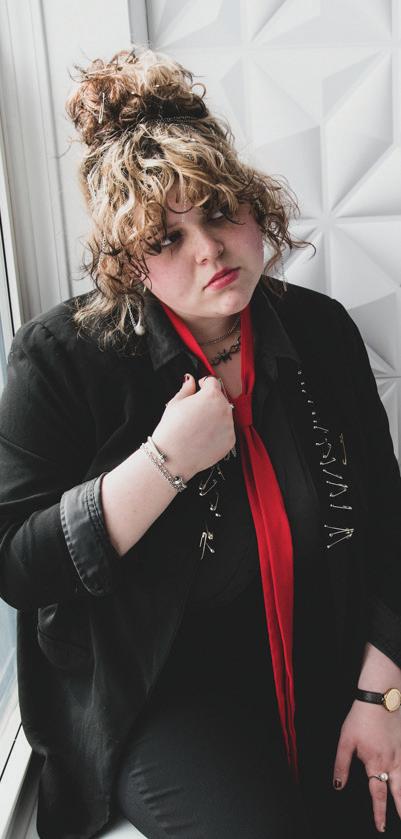
The title character is a Latine teenager who has taken her name in honor of Dulcinea, the object of affection for Don Quixote. Dulcci (Estefanía Mena) believes she’s seen the knight from Cervantes’s novel in the family attic, which she also claims is a portal to the past and more. She adopts her own noble quest by giving her birth certificate (she was born in Chicago) and other paperwork to her undocumented neighbor, Dulce (Daisy Valdez), so the latter can apply to college. This causes conflict with her older sister, Zoyla (Aida Palma Carpio), who was born in Mexico and made the harrowing border crossing with their parents when Dulcci was in utero.

The effects of being documented vs. undocumented in the same family, the guilt of being a “special case” due to an accident of birth, and the question of what one owes oneself and what one owes to the larger community all tangle together in the story, which also uses the actors’ own family experiences with immigration in direct-address interludes. The inspiration for the DREAM Act, Tereza Lee (who was born in Brazil to South Korean parents), also shows up in archival video footage. In our current historical nightmare, passing the stalled legislation (first dra ed by Senator Dick Durbin) seems like an impossible DREAM, indeed. But Colectivo El Pozo’s bittersweet and heartfelt production gives voice to a generation seeking a foothold in a country that has provided both opportunity and heartbreak to their families. —KERRY REID DULCCI Through 10/26: Thu–Sat 7:30 PM, Sun 3 PM; Rivendell Theatre, 5779 N. Ridge, 773-844-4188, clata.org/en/productions/Dulcci-Colectivo, $30, $25 students/seniors, in Spanish and English with subtitles
RVirgin martyrs
Saving Myself is a comedic but poignant look at religion and teenage girls.
In April, Subtext Studio Theatre Company dove into dysfunctional relationships between women with Eliana Theologides Rodriguez’s Poor Queenie Their entry in this year’s Destinos festival, Maria Arreola’s Saving Myself, covers some of the same territory—most nota-
The play isn’t explicitly about politics—except for the fact that controlling the sexuality and desires of young women has been a social and political imperative for millennia, and the Catholic church has played a big role in adding to the shame and guilt many women have felt about acting on those desires. (“Does shame feel like one part of you wants to kill another part because it’s being stupid?” one of the girls asks at one point—a pretty damn good description of what it feels like to be at war with yourself.) These aren’t new revelations, but part of what Saving Myself gets at is that figuring these things out for yourself as a young person feels fresh and life-changing. Directed with a sure and sensitive hand by Omar V. Fernández, Arreola’s play mostly succeeds at balancing the poignancy of teenage isolation with the comedy of girls letting themselves say what they’re really feeling when there are no adults around to stifle them. —KERRY REID SAVING MYSELF Through 10/19: Fri 7:30 PM, Sat 2:30 and 7:30 PM, Sun 2:30 PM; UrbanTheater Company, 2620 W. Division, clata. org/en/productions/Saving-my-self and subtextstudiotc.org, $27.50, $14.50 student/military
RMean girls after the war
A queen and her former classmates relive middle-school traumas in Veal
Last fall, Refracted Theatre Company produced Laura Winters’s dystopic drama Coronation, in which the failure to elect a woman president leads to revolution, environmental disaster, and a figurehead monarchy in the United States. Jojo Jones’s Veal at A Red Orchid Theatre (directed by Dado) also focuses on a queen during dystopic times. Queen Chelsea of North America (Alexandra Chopson) presides over a blasted and wartorn landscape. The young monarch is visited by three former middle-school classmates—all of them bruised, dirty, and covered in rags that capture what’s going on in the outside world before they open their mouths.
Franny (Jojo Brown) has come along with Noa (Alice
Wu) and Lulu (Carmia Imani) to beg Chelsea to help her get insulin for her sister—since the civil war that’s ravaged the country, the supply chain is a “messy bitch.” They shamelessly suck up to her and her manservant (or “concubine,” as Chelsea calls him), played by Jasper Johnson. “We all knew you’d be successful one day, but queen of North America!” Franny exclaims. Chelsea at first seems to relish using her power against them, telling Franny she remembers her diabetic sister as an “uggo.”
But as the play unfolds in a taut 75 minutes or so, we see that Chelsea wasn’t always the mean girl. Instead, she’s nursing pain and trauma from the way her three visitors treated her in middle school. (In fact, her throne room is apparently in what’s le of the school’s gymnatorium, turned by Tianxuan Chen’s set and lighting design into a near–fun house atmosphere with big reflecting mirrors at one end of the small space.) If they want her help, they’re going to have to relive the torments they inflicted upon her—at lunch, at parties, and most disturbingly, on a field trip to a petting zoo where something very bad apparently happened to her.
If you’ve ever read Margaret Atwood’s brilliant 1988 novel Cat’s Eye, Jones’s dissection of the way adolescent traumas inflicted by other children lives on will seem familiar. (You might also be reminded of the girlsgone-feral television show Yellowjackets.) But Jones is also interested in exploring how the act of remembering itself shapes our ideas of who we are long a er the past is behind us. Her former schoolmates think Chelsea is seeking their apologies. But she tells them, “I don’t want to fix it. I want to live it the way it was,” as if she’s doubted her own recollections from being 13.
The conflict between Franny, who was apparently the eighth-grade ringleader, and Chelsea is the fulcrum for the story, and Brown and Chopson are hypnotic in their confrontations with each other. But the entire cast delivers surprising twists and comedic chops within the increasingly dark story, suggesting that there may be a direct line between the cruelties we inflict on each other early in life and the way we structure the even colder and larger world as grown-ups. —KERRY REID VEAL Through 11/2: Thu–Fri 7 PM, Sat 3 and 7 PM, Sun 3 PM; also Mon 10/20 7 PM (industry night); A Red Orchid Theatre, 1531 N. Wells, 312-943-8722, aredorchidtheatre.org, $55 v
e 61st Chicago International Film Festival meets the moment
In a fractured time, global conversation becomes the festival’s most radical act.
By MAXWELL RABB
To discover something new is to invite change, and that is the ethos on which Chicago’s longest-running film festival is doubling down. In a moment of increasingly splintered politics and communities, the Chicago International Film Festival insists that the city—and the cinema—remain places where the world can meet.
The 61st Chicago International Film Festival (CIFF) runs from October 15 to 26, with 111 features and 70 shorts, including 39 premieres. Screenings take place at the AMC Newcity 14, the Music Box Theatre, the Siskel Film Center, the Chicago History Museum, and the Logan Center for the Arts at the University of Chicago, while community programs extend to the National Museum of Mexican Art in Pilsen and Kennedy-King College in Englewood. With films from 60 countries, CIFF is less about presenting a survey of cinema and more about staging a conversation between Chicago and the world.
“Part of our mission is to start conversations,” says Mimi Plauché, the festival’s artistic director. “It’s meant to be a meeting point and a point of discussion and debate, where we feel like we’re all learning.”
How a festival begins and ends is never incidental, and this year’s choices speak volumes. Opening night’s One Golden Summer (2025) revisits the triumph and scandal of Chicago’s Jackie Robinson West Little League team—the team won the U.S. bracket of the Little League World Series in 2014 but was later investigated and stripped of its accomplishments for recruiting ineligible players. Narrated by the now-grown players, the film reframes what had become a national flash point into an intimate story of youth, race, and redemption.
including Bradley Cooper’s Is This Thing On? (2025), Guillermo del Toro’s Frankenstein (2025), and Noah Baumbach’s Jay Kelly (2025), to name a few. Notable standouts include Yorgos Lanthimos’s Bugonia (2025), a black comedy in which paranoid conspiracists kidnap a powerful CEO, starring Emma Stone and Jesse Plemons in another collaboration with the Greek director (the first being 2024’s Kinds of Kindness ). The main slate also features Jafar Panahi’s Palme d’Or–winning film It Was

“It’s only the second time in 20 years we’ve opened with a documentary,” Plauché says. “It’s such an important Chicago story, and I think it will connect us with a broader audience in Chicago.”
Closing night, on the other hand, turns toward levity with David Freyne’s Eternity (2025), in which Elizabeth Olsen, Miles Teller, Callum Turner, and Da’Vine Joy Randolph weigh choices in the afterlife. “Oftentimes when we’re looking at closing night, we want to end with something uplifting,” Plauché explains. “It’ll leave audiences with their last taste of the festival as a sweet one—dessert.”
The tonal balance between uplifting and serious carries into the festival’s centerpiece presentation: Japanese director Hikari’s Rental Family (2025) stars Brendan Fraser as an American actor adrift in Tokyo who finds purpose working for a Japanese “rental family” agency. The choice reflects a filmmaker whose sensibility bridges humor and humanity. “We get this great drama, and the humor supports it,” Plauché says.
The anchor presentation is flanked by the festival’s star-studded spotlight presentations, PREVIEW
that we’re seeing a lot in the New Directors lineup this year is films that feel very deeply personal to the filmmakers. That’s often a really amazing place to start with the first feature.” Other discoveries carry the same bold storytelling. Italian director Carolina Cavalli’s The Kidnapping of Arabella (Il rapimento di Arabella) (2025) pairs a restless millennial with an eight-year-old runaway who may or may not be her younger self. “It is a coming-of-age [story], but it’s one that happens in reverse,”
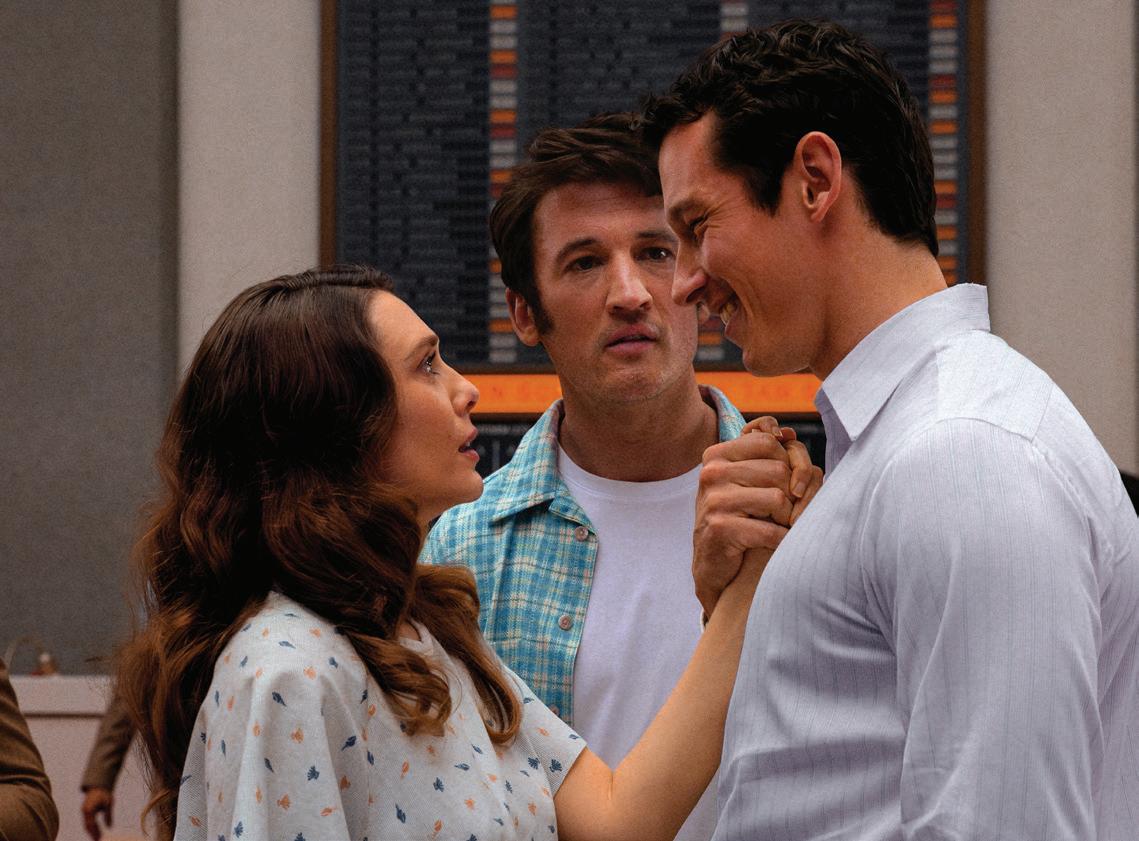
Just An Accident (2025), a story about a man who believes he stumbled into the ex-military officer who tortured him under government orders.
While the main slate is impressive, stacked with marquee premieres, the festival’s true legacy lies in discovery—in the multicultural perspectives and debut voices that, CIFF programmers believe, will define cinema’s future. That’s why programs like the New Directors Competition—in which first and second features test their voices—feel integral.
“The New Directors Competition is where the boundaries are being pushed and explored,” says CIFF programmer Sam Flancher. “There’s something fresh and thrilling about watching a debut, and the Q&As are always the best rooms in the festival.”
Sophie Gordon, international feature film programmer at CIFF, highlights Oca (2025), the debut of Mexican filmmaker Karla Badillo, which follows a young nun in San Luis Potosí who is haunted by prophetic dreams. “This is a really gorgeous, surreal film with touches of magical realism,” she says. “That is a very personal film to the director. That’s something
Gordon says. Meanwhile, Plauché highlights Ish (2025), the first feature by British visual artist Imran Perretta about two 12-year-old best friends—one South Asian, one Palestinian British—shaken by a stop-and-search. “It’s a tale of friendship and the di culty of growing up, especially with this background,” Plauché says. Flancher singled out Dry Leaf (2025), Alexandre Koberidze’s pixelated Georgian road movie filmed entirely on a 2006 Sony Ericsson. He says that the film “challenges our idea of what cinematic beauty is.”
CIFF provides a platform for international voices to meet in Chicago, turning the city into a site of cultural exchange while grounding that dialogue in its own neighborhoods. That’s why the ever-popular City & State category champions Chicago- and Illinois-based films, such as Rich Newey’s Adult Children (2025), focused on immature siblings dealing with their addict brother, and Nurzhamal Karamoldoeva’s Only Heaven Knows (Dünüyö) (2025), about a Chicago-based Kyrgyz family torn apart by gambling debt. Even in its local programming, CIFF foregrounds questions of growth and identity.

continued from p. 13
Indeed, the festival is unusually saturated with coming-of-age stories. Directors Lorraine Jones Molina and Cristian Carretero present a film titled This Island (Esta Isla) (2025), about a young couple finding refuge within a rural community in the Puerto Rican mountains. Meanwhile, Iranian director Hasan Hadi’s The President’s Cake (2025) follows a nine-yearold as she struggles to bake a cake to celebrate the birthday of Saddam Hussein. In fact, the coming-of-age stories appear throughout the entire program, not limited to youthful tales, but rather expanding this idea to a broader concept of change.
“With coming-of-age stories, you’re often at a crossroads, and it’s a moment where you have to make a big decision about what’s next and how you’re going to make choices and what the implications of those choices are,” Plauché says. “It made me think about where we are right now in the world. It’s a moment of change. We’re all confronted with choices that will impact our lives individually and then the greater world. For me, it’s interesting to think about coming-of-age in that context.”
The dialogue also extends backward. This year’s Frame by Frame program o ers 35 mm presentations of Richard Linklater’s Nouvelle Vague (2025), paired with Jean-Luc Godard’s Breathless (À bout de sou e) (1960), and Kelly Reichardt’s Old Joy (2006). Reichardt herself will attend a retrospective of her work, including First Cow (2019), Showing Up (2022), and
her 2025 feature, The Mastermind . Another standout is a special screening of Euzhan Palcy’s seminal film Sugar Cane Alley (Rue Cases Nègres) (1983), at which she will receive CIFF’s Black Perspectives Tribute and Career Achievement Award.
For Plauché and her team, that breadth— Chicago stories, international coming-of-age films, and restored classics—is a matter of principle.
“The way the festival has always been programmed is deeply connected with whatever is happening in the world at that time,” she says. She emphasizes that they hope to create “a welcoming atmosphere that’s a starting point where you might encounter an experience—a perspective—that’s di erent from your own.”
In a fractured time, global conversation becomes the festival’s most radical act. CIFF isn’t just about premieres or prizes; it’s about strangers leaving the theater with more to say to one another than when they entered. v
m letters@chicagoreader.com
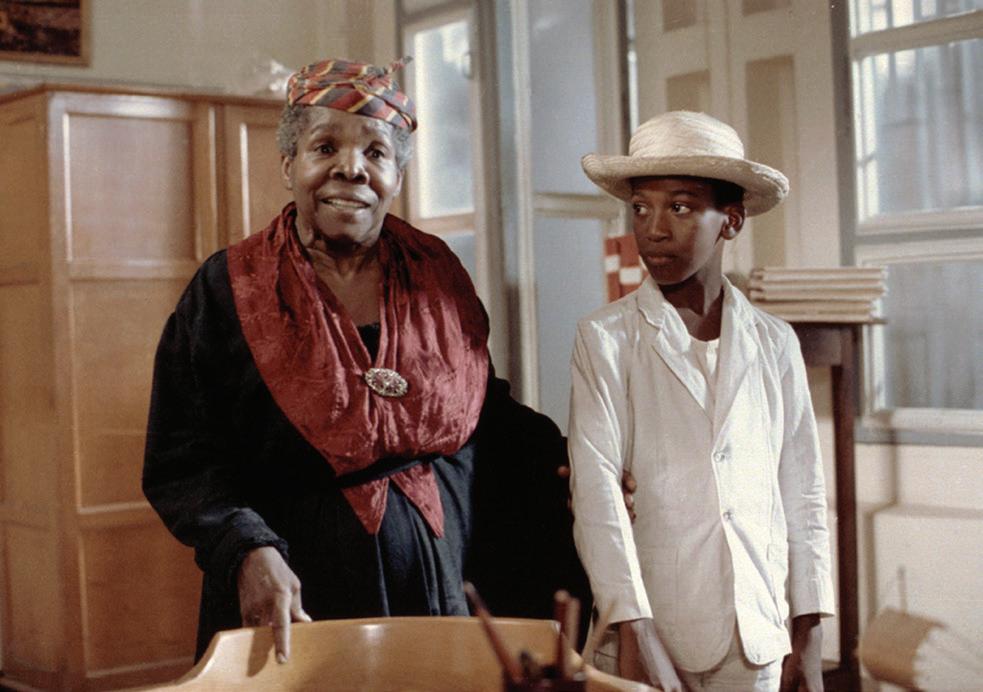
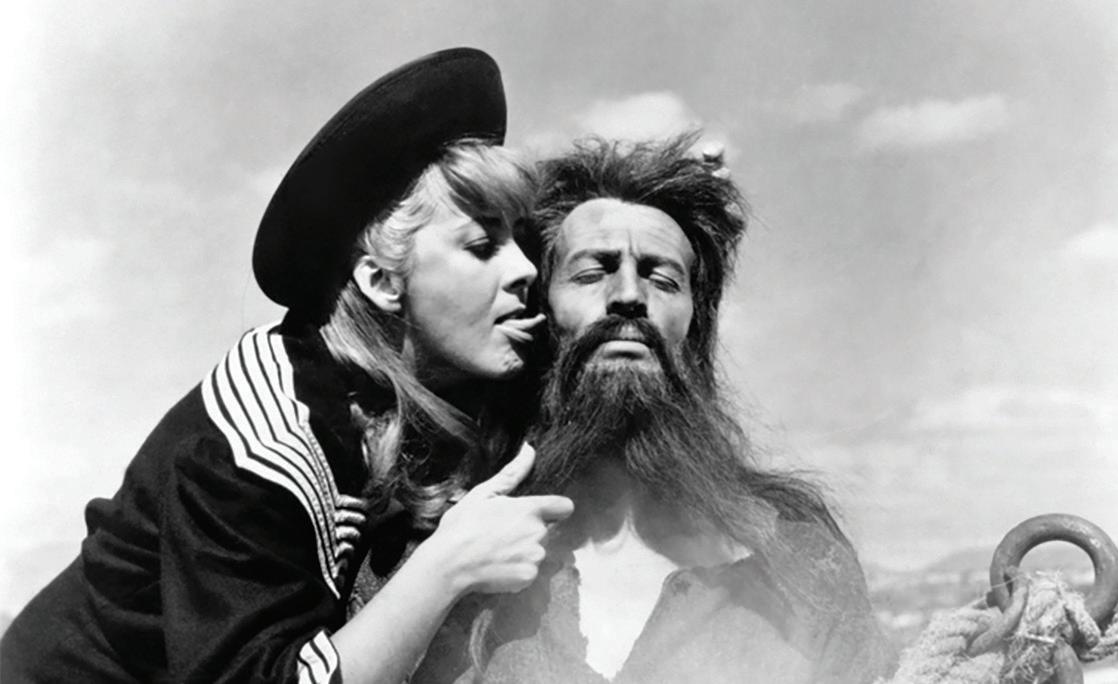



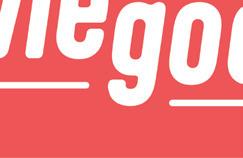
The Chicago Marathon is coming up—something about which I know little—but there’s a cinephile equivalent that I undertake more frequently (not to brag or anything) than do the runners, which is the trek to Doc Films at the University of Chicago from my home in Edgewater. Sometimes, depending on transit and/or tra c, it can take two hours to get there; sometimes, even leaving two hours early, I end up not making it on time. (One of my personal rules is that I don’t go into movies late, which may just seem like a common courtesy, but I also can’t stand to not see a film in its entirety.)
Make no mistake—it’s always worth it. Doc Films is the oldest student-run film society in the country and, every quarter, boasts a killer lineup of films that students and community members alike can pitch for inclusion on an upcoming calendar. This quarter’s schedule is exceptional, with several not-to-be-missed series. There’s Joan Crawford: Actress as Auteur on Mondays; Buñuel in Mexico and Konrad Wolf on the Centennial on Tuesdays; and Sounds of Shaking Earth: Landscapes of Portuguese Cinema on Wednesdays. On Thursdays, there’s the Ethical Vampire: the Moral Dilemma of Vampirism at 7 PM and Celluloid is Out: Queer Freedom and Subculture of the 1970s at 9:30 PM. Conversations in Cars: Road Trips and Relationships and Charting Imaginary Worlds: Three Fantasy Films take place on Fridays, also at 7 and 9:30 PM, respectively. Infinite Cinema: the Films of Hollis Frampton is on Sundays. Saturdays are a mix of board picks, new releases, restorations, and special events, as well as reruns of screenings from the week prior. There’s also a special series, Marta Mateus: Carte Blanche, for which the Portuguese filmmaker was able to curate a lineup that will screen mostly on Sundays. This past week, I made it out for the first

screening in the Buñuel in Mexico series, which included Luis Buñuel’s 1965 film Simon of the Desert and his 1962 film The Exterminating Angel. Those were the last two films he made in Mexico; the Spanish-born filmmaker continued to live there for the rest of his life, though he made his later films in France and Spain (where he’d also made films prior to his years in Mexico). Simon of the Desert, only 45 minutes long, centers on a Syrian Christian ascetic living atop a pillar—based on the fifth-century Syrian saint Simeon Stylites, who did so for 36 years—as the devil tempts him in various forms, all depicted by the great Mexican actress Silvia Pinal. Buñuel remains best known for his place within the surrealist pantheon, and the film involves aspects of this mode as well as satire—though when it comes to religion, Buñuel’s attitude is less scathing than it is facetiously critical, still with an element of tenderness toward those who uphold it so fastidiously.
The Exterminating Angel is more plainly satirical, though the ire is directed at the ruling class. In it, a group of wealthy aristocrats is stuck inside the salon of one of their houses, unable to leave for any discernible reason. This follows a series of inexplicable repetitions toward the beginning of the film; the surrealist aspects are impenetrable, though one can surmise Buñuel was intending for the “victims” to be those of the upper class, and the resulting opacity is likewise enticing and daunting.
Which is how I might describe the marathon trek to Doc Films: The programming is enticing, the journey daunting. But, like a Buñuel film, it’s ultimately worth it.
Until next time, moviegoers. —KAT SACHS v
The Moviegoer is the diary of a local film bu , collecting the best of what Chicago’s independent and underground film scene has to o er.
The Hyde Park Jazz Festival defies federal defunding to shine brighter than ever
Photos from the fest’s 19th year overflow with joy and community that give the lie to Trump’s ugly vision of the world.
By MICHAEL JACKSON

This year, I’d planned to cut town during the Hyde Park Jazz Festival—I thought I’d finally follow in the footsteps of notorious photographer Jim Marshall and shoot the Monterey Jazz Festival in California. After all, Chicago is so dangerous, as we’re constantly being told. And in May, the noisome Trump administration had withdrawn the HPJF’s grant from the National Endowment for the Arts—$30,000, or nearly a third of its core artist budget. Add to that a precipitous drop in financial support from the University of Chicago and skyrocketing production expenses since COVID, and surely the fest would be weakened. Wouldn’t it?
You’d think I’d have learned by now not to underestimate the Hyde Park Jazz Festival. Despite the loss of that NEA money, the lineup for the 19th HPJF was more intriguing than the one in Monterey. I decided to stay in Chicago.
And on a radiantly sunny weekend, the HPJF had by some metrics its best year ever. The crowd was huge—the festival can’t provide exact numbers because it’s free, partly outdoors, and unfenced, but this was possibly the biggest yet. Donations from the public totaled more than $40,000, increasing by roughly 30 percent over 2024 and hitting an all-time high. The people spoke—or rather, the people took action.
“I always plan for contingency,” says Kate Dumbleton, executive and artistic director of the HPJF. She and her team had already navigated the pandemic shutdown, and they weren’t surprised by Trump’s rampage of destruction. “I saw the writing on the wall so had adjusted to deal [with the impending withdrawal]. I have to be finished booking by April, so I made the call and adapted,” she says. “Other plans I would have added if we
had gotten the NEA, but that didn’t happen, of course.”
Dumbleton treasures the fans who help sustain the festival. “We are incredibly excited about and grateful for the community’s support and interest,” she says. “I think it demonstrates the power of art and how much people want to convene and celebrate the beauty of life in Chicago.”
I decided to risk only skimming the festival program in advance, hoping that would invite serendipity and reduce stress from hard choices between overlapping sets. This is ill-advised, however: The HPJF’s exhaustively informative website includes not just bios and personnel lists for every act but also text descriptions of their promo photos for the visually impaired. Some early gigs were just as unmissable as the headliners—though “headliners” aren’t really a thing at this diverse, egalitarian event.
One example: Reader music editor Philip Montoro, who’d given me this gig, arrived on Saturday at lunchtime to catch a rare appearance by the Nikutai Mondo Trio at the Logan Center Penthouse while I was just parking my car in Hyde Park. When I met with one of the trio’s members, bassist Tatsu Aoki, at his Sunday set with the Chicago Asian American Ensemble, he rubbed it in. “That was a really, really wonderful show yesterday,” he said. “We started the trio with [pianist] Yōsuke Yamashita [and butoh dancer Takahiro Tomatsu] a couple of years ago, and we’ve done a couple concerts in Japan.”
Other imported artists at this year’s HPJF included two New Yorkers, pianist Aaron Goldberg (in Dana Hall’s trio) and bassist Lorin Cohen (in Ryan Cohan’s Two Quartets project), and Boston-based ethnomusicologist and guitarist Nathaniel Braddock of Occidental Brothers Dance Band International. Trumpeter Maurice “Mobetta” Brown, drummer Carl Allen, Trio Imagination (pianist David Virelles, bassist Reggie Workman, and drummer Andrew Cyrille), singer Fay Victor, and pianist Jason Moran were also among the outof-towners—drum legend Hamid Drake too, a longtime Chicagoan who now lives in Milan.
The festival celebrated Drake’s 70th birthday at the Logan Center with a quartet set and a conversation with friend and collaborator Michael Zerang. “Chicago is the fertilizer that gave me the courage to create and continue
the spark,” Drake said.
Drake’s birthday quartet consisted of local compadres: saxophonist and pianist Ari Brown, bassist and guimbri player Joshua Abrams, and vibraphonist Jason Adasiewicz. They didn’t attempt to impress with overblown concept; they just dug deep. Following that performance, Victor explored the music of oft-overlooked composer Herbie Nichols (including the poignant “Lady Sings the Blues,” written by Nichols and Billie Holiday) with her long-running group featuring pianist Anthony Coleman and bassist Ratzo Harris. Hall, an educator and HPJF mainstay, clearly had a blast playing pieces composed by drummers with Goldberg and bassist Clark Sommers. After a rambunctious take on Thelonious Monk’s “Bemsha Swing,” Hall made the

L: Celestine
Thomas: “I’m Nigerian American. I moved here to Irving Park from North Carolina in 2016. I’m a data analyst for Humana health insurance—we take care of old people and are the best insurance company in the world.”
Uduak: “I’m a PharmD.” Preferred music? Uduak: “We tried to get into the Rockefeller Chapel last night, but there wasn’t enough seating. We’re definitely coming back—a great atmosphere!” Thomas, when I go in for a first bump to say goodbye: “We call that ‘chop knuckle’ in Nigeria.”
MUSIC
continued from p. 15
point that Monk had written the feisty tune with drummer Denzil Best, an immigrant from “Bimshire” (a nickname for Barbados).
Braddock epitomized the broad horizons of the festival: In his investigations into African music, he’s lived and studied in Ghana and the Democratic Republic of the Congo, among other places, and collaborated with the likes of DRC band Jupiter & Okwess and Malian-born balafon master Balla Kouyaté. When I pick out people in the HPJF audience to photograph, our chats reliably reveal that the festival’s public—whoever passes through the informal donation gates, picnics along the Midway Plaisance, walks their dog, o ers their newborn a first glimpse of the world, takes in fall sunshine—is diverse, educated, and international.
Saturday’s program included more than two dozen concerts, including improvised duos behind a curtain in the Logan Center’s gallery to accompany Lauren Deutsch and Jonathan Woods’s Tangible Sound: An Immersive Experience of Great Black Music. Their experiential exhibit consisted of animated performance portraits of members of the Association for the Advancement of Creative Musicians, which celebrates its 60th anniversary this year. Despite the day’s bustle and intensity, it all narrowed and distilled itself into an evening-capping set by Moran at Rockefeller Chapel.
These traditional Rockefeller sets, often by solo artists, have previously been at 11 PM, but this year’s was moved up to 10 PM to adjust for a pandemic-driven decline in night owls. Dumbleton didn’t book any of the customary 9:30 PM shows, so that nobody would have to skip something to see Moran—and by adding performances elsewhere in the schedule, she kept the program from shrinking.
Moran delivered a magnificent exposition of Duke Ellington compositions, which he titled My Heart Sings. The earlier start time made his encore of “Come Sunday” less topical (it otherwise would’ve arrived past midnight), but it proved to be a boon for attendance. The beautiful chapel quickly filled completely, so that some folks were necessarily turned away. The capacity crowd was no doubt also a consequence of Moran’s reputation. In July, five months after Trump took over as chairman of the Kennedy Center, Moran left his position as the center’s artistic director of jazz, which he’d held since 2011. “The situation became untenable,” Moran told me o stage at the end of his set. His playing blended reverence for Ellington (and for Moran’s teacher Jaki Byard) with
postmodern irony: He recast “I Got It Bad” as a defiant, hard-grooving cascade, and he took an intellectual scalpel to “It Don’t Mean a Thing,” canceling its cheeseball swing as if to suggest new complexities for turbulent times.
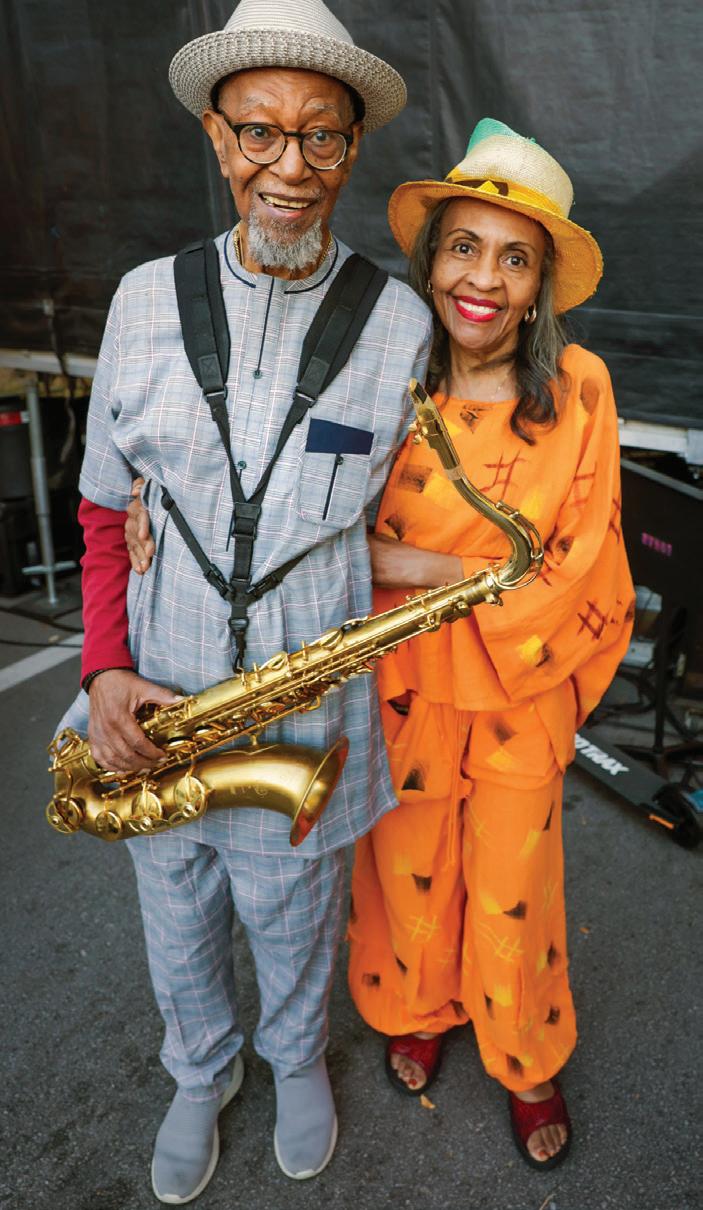
Saxophonist and pianist Ari Brown and wife
What’s the best thing you’ve seen at the festival, and how many times have you attended? Cherlyn: “It’s my second time here, and naturally my husband is outstanding! I also wanted to see Lauren Deutsch’s photography installation.”
Ari, your tenor sax went missing at the Logan Center for some weeks—does it feel good to get your baby back? Ari: “It sure does!” You played with Hamid Drake and your own quintet. How many appearances have you made over the years? Ari: “I think I’ve played at 17 of the 19 festivals.”
MICHAEL JACKSON FOR CHICAGO READER
As the so-called powers that be spread mayhem and cruelty across the country, they’re also working tirelessly to lower the cultural bar throughout the States. The indomitable joy and unapologetic sophistication of the Hyde Park Jazz Festival—which crosses classes, races, genders, and generations—gives the lie to their anemic white supremacist vision of the world. “People need art and community right now!” says Dumbleton. “It’s so true. It’s the best vibe ever!” v
m letters@chicagoreader.com
CHICAGOANS OF NOTE
Darien Williams, concert booker with Meanie Productions
“When you have a night where you pack a room, you’re connecting all these people, paying your friends, and making the bar money.”
As told to MICCO CAPORALE
Darien Williams follows the rhythms of a musical life. Before his first birthday, he was already keeping time to songs he heard, and his parents eventually enrolled him in drum lessons. In junior high, his love of drumming became a love of jazz music, which carried him into his first year at Roosevelt University in 2011. After a semester, he dropped out to drum with the indie-rock band Young Man, which toured nationally and internationally. Before reaching 20, he’d had the broad cultural experiences of road work and developed firsthand insight into the business and logistics of music.
Williams moved to Chicago in 2013. Now 32 and living in East Garfield Park with his partner and newborn daughter, he runs a booking company called Meanie Productions. He focuses on bringing eclectic lineups to venues where admission seldom needs to be more than $10. Some of his strongest local partnerships are with Lemon and Color Club, and he also books other rooms in Chicago and beyond. He’s still a musician (he’s currently in the bands Bussy Kween Power Trip, Unmanned Ship, Cat Mullins & ThemBoys, Mines, and Airiel), but his main ambition is to build connections among Chicago’s disparate musical communities and bring that talent to the rest of the country. Williams recognizes something spiritual about music—and he wants that to transform the world.
My grandma was a blues singer in Mississippi named Elizabeth “GG” Lyons, so I grew up in music. The story I heard growing up was, I was only four months old and tapping along on the table to the beat of commercials. My grandma said, “He’s got rhythm. Put him in drum lessons.” So when I was five, my parents finally did. I’ve been playing ever since.
My dad was in the military and then became a pastor, so we moved around a lot until we settled in Naperville. My family grew up Baptist, but my dad went into nondenominational Christianity—megachurch style, like eight thousand people on a Sunday. At church, I was able to play drums every week. That helped me get good at playing in front of people. I really loved it. I still listen to Christian music sometimes. Music seems to be the easiest, fastest way to access that spiritual level. I think some of the best musicians in the world are gospel guys, like Fred Hammond, Kirk Franklin, Hezekiah Walker, and LaShun Pace. My belief is, because they’re also playing for worship, a synchronicity happens. They’re spiritual conduits interfacing with the divine.
I started studying jazz in seventh grade. Immediately, I was like, “I love jazz.” I got a scholarship to study jazz drumming at Roosevelt but dropped out to tour with Young Man. I did some really cool stu , like opening up for the Walkmen and Girls, and I got to see the other side of the music business in a way I’m still using. When I first started studying drums for myself, it was a lot of classic rock stu . I still love that stu , but the main music I listen to has always been jazz. Jazz has a language and philosophy. If you fuck up, make it cool. Turn it into something that makes people go, “Holy shit!” The confidence of pushing through a mistake is what makes jazz. I like that
“That’s consistent with most art in America: started by Black people, then taken by white culture and exploited. That started me thinking about being a Black man in this country and how hard it is to be a creative. What’s my role?”
I really hated jazz school, to be honest. I feel like the jazz world today is disconnected from the spiritual depth of our forefathers. These Black artists typically grow into icons with very little pay, only “respect.” Then white people take the greatness of what these Black artists create and commercialize it or make it more digestible for white people, and they get all the fame and money. In my opinion, that’s consistent with most art in America: started by Black people, then taken by white culture and exploited. That started me thinking about being a Black man in this country and how
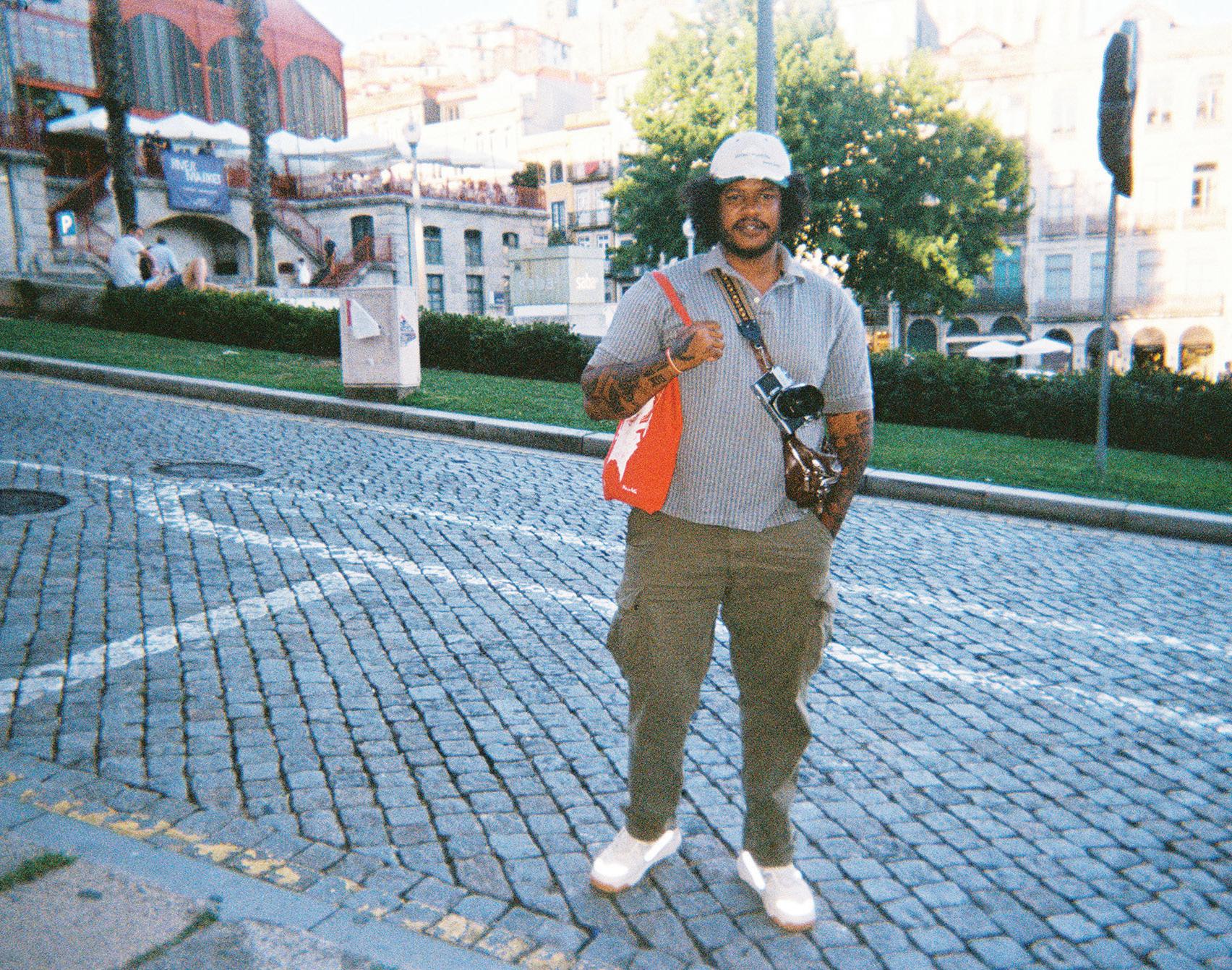
approach to creativity.
My favorites are Black men in the 60s and 70s who were able to create this profoundly spiritual, divine music in spite of the hardships and oppression they were experiencing day-to-day. There’s nothing that comes close to that period of music for me because of how emotionally squeezed these guys must have been. They go and travel the world, and they’re the most revered, loved icons everywhere else, and then they come back to America and are treated badly.
I was putting on a lot for them from 2020 to maybe 2022. Then I went to the [California] Clipper in 2022 and grew to be, like, the architect of their programming for a couple years. I was going beyond my limit [of 25 shows per month to] 40 shows a month. It was a beautiful time, but I ended up being fired in 2024. That’s when I started my own production company, Meanie Productions. The LLC is called “Meanwell,” and I thought “Meanie” was a good nickname. I like the way they go together. Producing shows seems so simple on its surface, but it really sucks. It’s one of the worst jobs of all time. Everybody wants to do it until they try it. Sometimes I’m like, “Why the fuck do I do this?” My partner says I love a challenge. There’s pride in knowing how hard it is and being able to do it well. When you have a night where you pack a room, you’re connecting all these people, paying your friends, and making the bar money. And people are choosing this thing over, like, watching HBO.
a show that started with an experimental jazz group followed by an avant-garde pop group followed by a techno hardware set. Right now, I book at smaller venues. The biggest is a 250 cap. But I want to bring in larger bands and have local bands open. Sixteen on Center does that, but they tend to lean one way when it comes to booking.
That’s a role I gladly find myself in: How do I create a diverse, eclectic music scene? I can only do so much, but that’s powerful to me. Bringing together art communities that have never heard of each other and putting them on one bill creates bridges.
hard it is to be a creative. What’s my role?
I started booking when I was a kid because my high school band would play shows. When I moved to Chicago, I had a house in Logan Square called the Bunker, and I would throw big-ass shows and parties. Then I started booking shows and tours for Unmanned Ship, and that got me booking for other people. When the pandemic hit, I was working at Cafe Mustache, and one of the owners and I started a streaming network where we were producing ten shows a month.
A big dream of mine is creating a music culture that’s curious, supportive, and affordable. I respect cities like Nashville, New Orleans, and Austin, where music is just part of everyday life. You go to a bar, and there’s just a band playing, and everyone’s cool with it. Chicago isn’t really like that. I don’t think it has that foundational love of art and music. Mostly people are coming out for local shows because it’s friends or family in a band, or their friend booked the show. There’s not that curiosity. I like being eclectic. I hate going to shows where it’s all, like, the same style of punk music. That’s very boring to me. I think my approach can be . . . I don’t like this word, but more niche? You have to really love art and music to like weird shit. That’s part of my booking philosophy: How do these weird bands fit together? And what order should they go in to create a fluid show? I recently had
I’m sick of the clique-iness here. Especially for a “progressive”—well, I’ll say “liberal”—town, the amount of segregation here is ba ing and disgusting. Chicago is not about the culture. I would like there to be more unity. If there was a unification of cliques and cultures, there’d be no stopping us. It would be a transformative thing for the entire world. But I don’t have much faith that’s going to happen. Another goal is to have four or five venues that are maybe two- or three-hour drives where I can send bands. I like trying to find little pockets of like-minded venues across our country where I can send bands for a really great experience. I tell bands to play B or C markets, not big cities. It’ll be one of your favorite shows, and folks will buy a ton of merch. I help book at this place called the Spot Tavern in Lafayette, Indiana. It’s the only cool place in Lafayette, so it gets packed with weirdos that need a place to go. Every time I send a band there, they’re like, “This was our band’s greatest night.”
We are in a pretty bleak place artistically. It seems that most of the art being created is for the algorithm, not for beauty or connection with self. There’s less risk-taking. With younger kids, taking risks is a recipe for cringe or online fallout. Pretty much every moment, you are visible online and have to operate seemingly perfectly in order to maintain whatever minuscule idea of audience or traction you think you have.
But you’re losing exploration into your own psyche. That can be messy, o ensive, shocking, or scary. I would say, if you’re able to tackle those parts of yourself, you can share a more honest, true version of your perspective that can be deeply inspiring. If you’re only existing on this surface level of not wanting to look silly, that’s where your art is going to live. v
m mcaporale@chicagoreader.com
FRIDAY, OCTOBER 10 8 PM L. Shankar Honoring Zakir Hussain In Maurer Hall
THURSDAY, OCTOBER 9 7 PM & 9:30 PM Hiss Golden Messenger with special guest Rett Madison In Szold Hall FRIDAY, OCTOBER 17 8
OCTOBER 18 6 PM
50th Anniversary Celebration In Maurer Hall
GOSSIP WOLF
FRIDAY, OCTOBER 24 8 PM Pastor Donald Gay / Lluís Coloma In Szold Hall SATURDAY, OCTOBER 25 8 PM Chris Stamey In Szold Hall SUNDAY, OCTOBER 26 7 PM
/ The Fretless In Szold Hall
TUESDAY, OCTOBER 28 8 PM
Aynur In Szold Hall
10/15 The Bolero Project 10/22 Flamenco Blues 10/29 Las Cartas de Frida: Calaveras y Corazones
A furry ear to the ground of the local music scene

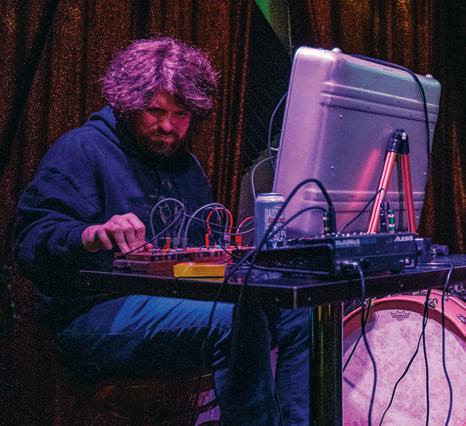
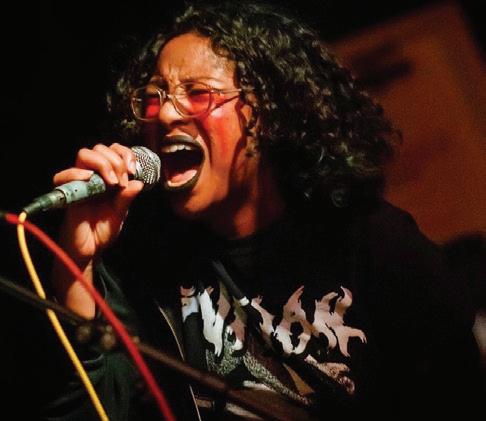
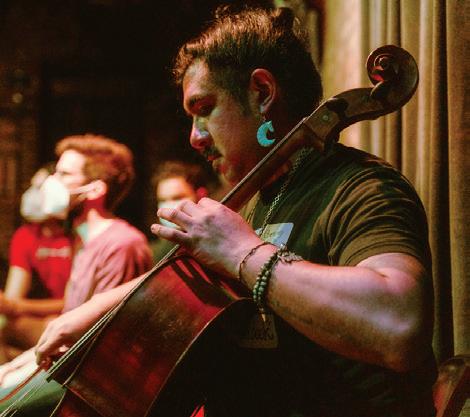
A DECADE AGO , drummer, composer, and sound engineer Bill Harris founded the Amalgam label. It’d been about four years since he’d moved here from Pittsburgh. “The longer I had been in Chicago, I was seeing a lot of folks who I thought were doing really good work [but] weren’t getting covered or recognized,” Harris says. “So it was a hope to bolster some of that.”
Harris came up with the idea for Amalgam while talking with pianist and improviser Matt Piet , who would collaborate with pianist Oscar Jan Hoogland on Amalgam’s first release, Amsterdam/Chicago Duo. The label has since put out 63 more albums, most of which document a large, loose-knit community of artists to which Harris belongs, devoted to free jazz and other forms of improvised and experimental music. About five years ago, cellist, composer, and improvisor Ishmael Ali joined Harris to help run the label. When Amalgam celebrates its tenth anniversary this weekend, they’ll both be on the lineup—Amalgam Fest takes place at Elastic on Thursday, October 9, and at the Hungry Brain on Friday, October 10, and Saturday, October 11.
Ali recalls meeting Harris during a workshop hosted by saxophonist Tony Malaby at Elastic in 2016. The following year, they launched the improvisational math-rock duo Errata , with Ali on guitar and Harris on percussion. ( Eli Namay , who was involved in Amalgam from the early days till 2023, would join later on upright bass.) In the 2010s, Ali ran Orotund Music, a DIY space that prioritized genre experimentation. “There was a lot of that workshoppy energy, at least around my circles at the time,” he says. “We would have workshops and work on certain improvisational or musical concepts.”
Ali moved to New York in 2019 but returned to Chicago at the start of the pandemic in early 2020. That year, Harris invited Ali to pitch in at Amalgam, and in 2021 they helped open the West Loop studio Marmalade
“Since I’ve jumped on, we’ve had this idea to have guest curators,” Ali says. “We’ll meet at the beginning of the year—we’ll chat and have ideas for guest curators. Like, we invite you to do a record, whatever you want. There’s no restrictions to that.” Since launching the program in 2023, Amalgam has had four or five guest curators per year. The curators can also record at Marmalade, at a discount or even for free.
Harris and Ali came up with the idea for Amalgam Fest this past winter. Harris says he reached out to Mike Reed in March to book the Hungry Brain. From the get-go, the label planned to pay the artists more than it could be sure the shows would raise.
“We’re paying out of pocket for this,” Harris says. “We’re trying to pay people proper quote-unquote festival rates. That feels good to be able to do that, but that also means the lineup can’t be massive.” Though Amalgam couldn’t even get close to booking everyone on its roster, the fest’s lineup summarizes the label’s creative character and history.
Thursday night’s concert is copresented by Elastic’s Improvised Music Series , with bass clarinetist and Pleiades Series founder Emily Rach Beisel, electronics duo Paradise Complete , and an experimental pairing of vocalist Carol Genetti and violinist-guitarist Peter Maunu . Friday’s lineup consists of Whisker , a project anchored by Andrew Scott Young on upright bass and Elastic interim executive director Ben Baker Billington on synths; Ra Bishop , a quartet coled by trombonist Jeb
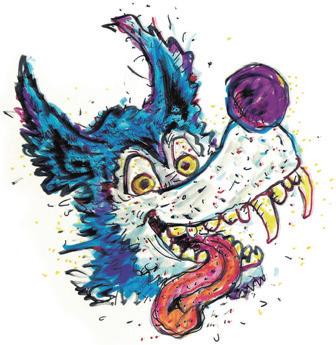
Bishop and drummer Avreeayl Ra that also includes Ali and reedist Edward Wilkerson Jr.; and a new group led by Ali (with an album due on Amalgam early next year) that features Harris, vocalist Brianna Tong, trumpeter Corey Wilkes, and pianist Jim Baker. Saturday’s bill is Piet on improvised solo piano, toy-instrument-loving quartet Microplastique, and heavy-hitting improvising trio Jakal (aka saxophonist Keefe Jackson, drummer Julian Kirshner, and cellist Fred Lonberg-Holm). IN LATE AUGUST , the Empty Bottle ’s weekly email mentioned an October 13 show headlined by a Chicago four-piece called Baby that Gossip Wolf had never heard about before. Tantalizingly, the Bottle called them a “new local supergroup,” but that’s been hard to verify—Baby haven’t been public about their lineup, and their promo photo is so overexposed that you can’t see any faces. This wolf has been in touch with the bandleader (“Henry”) to get copies of three of Baby’s unreleased demo tracks, but that’s as far as it’s gone.
The songs add high-pitched Auto-Tuned warbling to thick shoegaze guitars, twinkling synths, and easygoing drums. Baby might be the first Chicago band to fit under the umbrella of “cloud rock,” a loosely defined subgenre that seems to describe any indie rock that features electronic elements and also feels dashed off and hazy. Digital music distribution platform Nina coined the term earlier this year via an editorial playlist, which it followed up with a cloud-rock iceberg meme. Unless this wolf is missing something, there aren’t any locals on that iceberg, notwithstanding the inclusion of Tommy Paslaski of Purelink— that excellent ambient dance trio, though formed in Chicago, is now based in Brooklyn. Baby’s Bottle show is part of the club’s free Monday series; Leo Paterniti opens.
AT CHOP SHOP ON MONDAY , October 13, Biya Biya Productions hosts queerfronted Chicago maqam ensemble Tayf in a tribute to renowned Lebanese composer and political commentator Ziad Rahbani, who died in July. The evening’s two sets will emphasize the breadth and evolution of Southwest Asian and North African tradition: the first will focus on classical maqam and its drive toward tarab (a kind of heightened consciousness or ecstasy), and the second will reflect Rahbani’s incorporation of American jazz into the music. The festivities, which also include belly dancing, begin at 7:30 PM; tickets cost $32.51.
Got a tip? Email your Chicago music news to
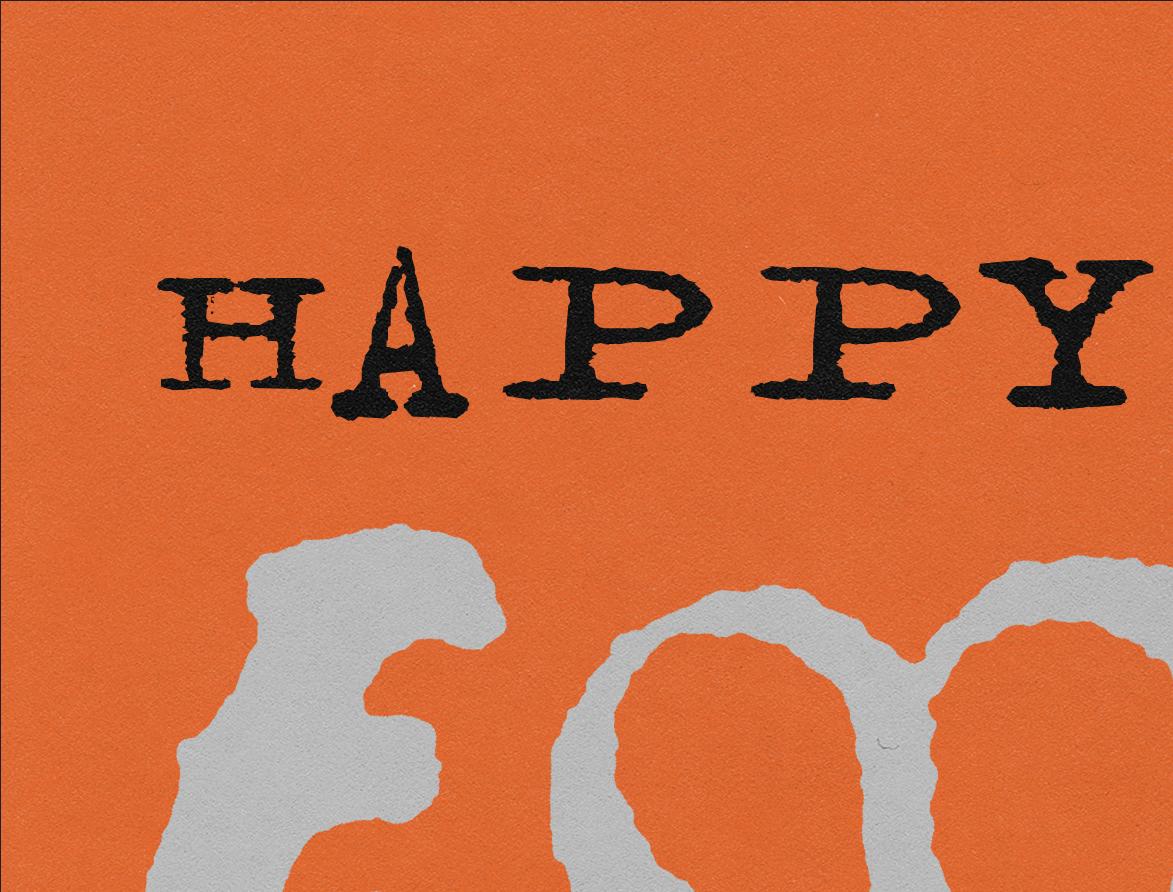
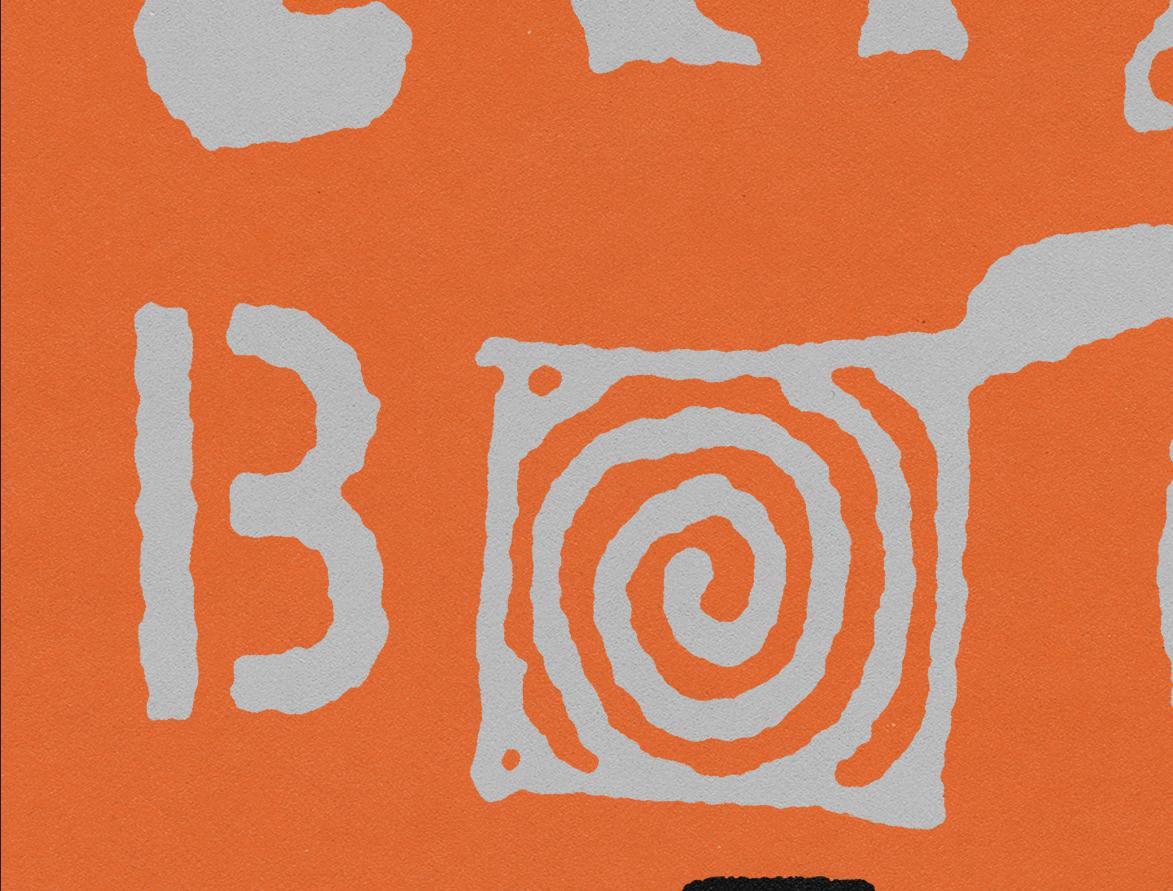

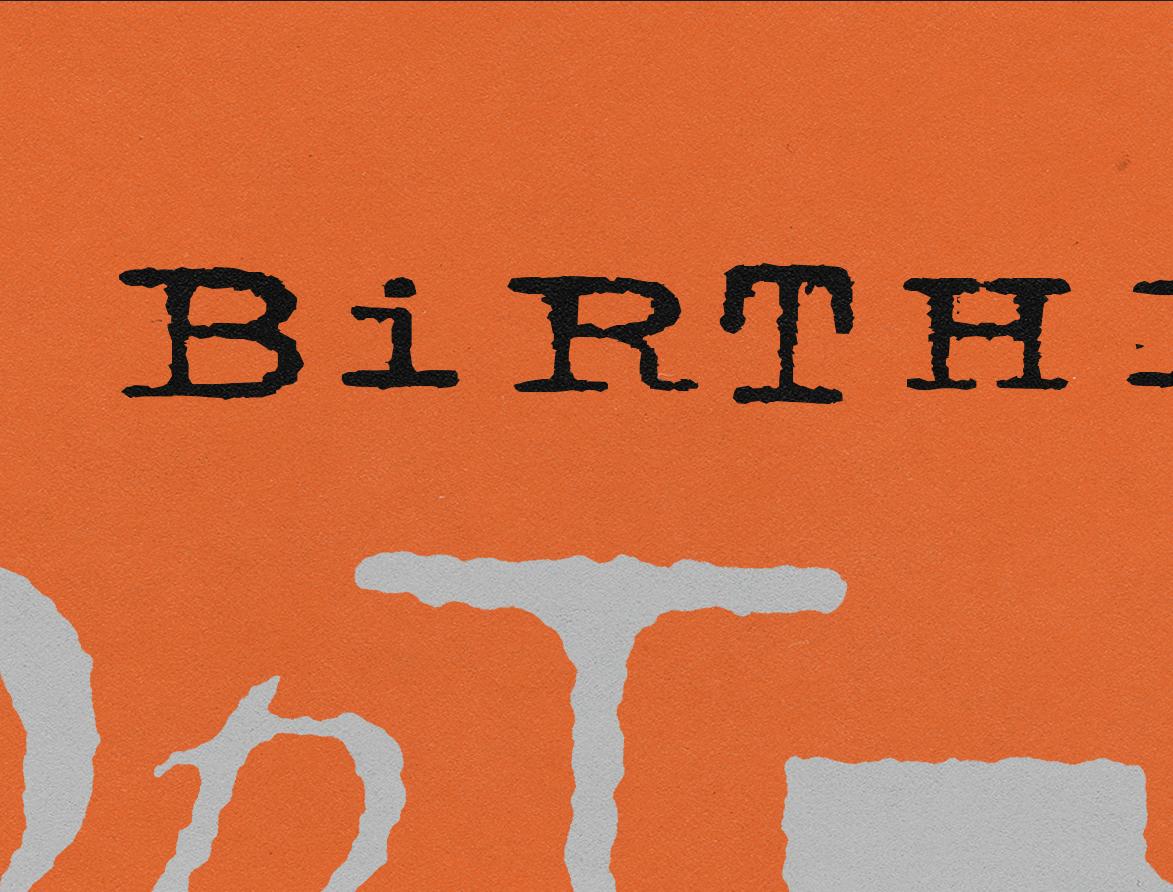





Recommended and notable shows with critics’ insights for the week of October 9
MUSIC
Chicago’s Oxvy.Moron raps by her own rules
OXVY.MORON, CAMILA ISABEL, ALIYAH JONES
Mon 10/13, 7:30 PM, Schubas, 3159 N. Southport, $17.55. 18+
OXVY.MORON DOESN’T PLAY TO expectations; even her name isn’t how it seems, with a silent “v” in “Oxvy.” The Chicagobased rapper’s visuals are as candy colored as her songs sound. In her music videos and promo photos, she bounces through imaginative artificial scenery that features touches such as golf-course green grass and human-size rainbowhued daisies. She’s always clothed in bright colors and buoyant silhouettes: flu y pink hats, electric yellow button-ups with pronounced cu s, oversize blue satin jackets. But alongside this silliness and play, she’s also sophisticated and deep, with a wide-ranging musical aesthetic and an enlightening degree of knowledge about herself.
Oxvy.Moron’s lyrics run a thematic gamut—exalting her blessings, meditating on anxiety, stunting on haters—and she weaves through rhymes like a skater breezing around a skate park. Even her most complicated tricks appear nonchalant. She girds her bars with a rich musical palette that incorporates trip-hop, soul, and even a little pop punk. The sound is as eclectic as her attitude: fun but not frivolous, introspective but not melancholic, fierce but not biting.
Last October, Oxvy.Moron self-released a six-song EP titled Bloom! Phase 1 , an optimistic adventure through the complicated journey of coming into selfknowledge. On September 2, she followed it up with a three-song tape called What’s Good? through LittleHeadButt, an emerging local cassette label with an excitingly diverse roster that includes harsh noise and postmetal. It seems a fitting home for an artist who can’t be easily described
- OCTOBER 9, 2025

but brings a distinctive vibe rooted in openness, self-reflection, and growth. For listeners who can party with that kind of sentiment, Oxvy.Moron’s show promises a garden of delights. —MICCO CAPORALE
THURSDAY9
Kumo 99 Drook and Casper McFadden open. 9 PM, Empty Bottle, 1035 N. Western, $26.78. 21+
Kumo 99 make dark, combustible electro that borrows DNA from ancestors on the fringes of pop— you can hear the industrial grind of Ministry and the combustible chant-along rhythms of the Prodigy. But to make sense of the Los Angeles duo’s highenergy style, it helps to consider it the product of a much more recent cultural event: the mainstream crossover of hyperpop and digicore, overlapping underground electronic subgenres that rewired pop with an adrenalized, maximalist, and o en overwhelming sound. Coachella’s 2022 booking of 100 Gecs signaled that the general public was getting a little more accepting of groups collaging together the heavier and weirder parts of the pop spectrum—and this year’s Coachella lineup included Kumo 99. They pile up low-humming synths and brazen drum ’n’ bass percussion until their music feels like a bullet train about to fly off the rails, while also coating it in a sleek gloss suited for the top spot on the Billboard Hot 100. Front woman Ami Komai sings and shouts her lyrics in Japanese, and earlier this year she told Alternative Press that her bandmate, Nate Donmoyer, doesn’t even know what she’s saying. On “Solitaire,” from Kumo 99’s most recent full-length, 2023’s HeadPlate , Komai fits her svelte vocals snugly into a Jenga tower of pumping percussion loops—and as busy as the track can get, she sounds perfectly at ease, as if everything in the song is exactly as it should be.
—LEOR GALIL
Amira Jazeera Tommy Bravos and Bae Root open. 8 PM, Burlington Bar, 3425 W. Fullerton, $22.66, $50.99 VIP meet and greet. 21+
Amira Jazeera is a pop star whose light is only beginning to reach our planet. Raised in Columbus and based in Chicago, the 25-year-old singersongwriter released her sugary sweet debut fulllength, The Amira Diaries, in April of this year, and it can rival anything by Sabrina Carpenter or Chappell Roan. But while those artists have had the benefit of major label budgets and professional studios, Jazeera recorded and produced her album in her bedroom.
Jazeera calls herself a “Palestinian pop princess,” and she embraces her heritage in her music as well as in how she presents it. She released The Amira Diaries in conjunction with Levantine Music, an independent label focused on Arabic talent, and she’s played shows and contributed to charity albums benefiting relief efforts for Gazans enduring Israel’s campaign of genocide. She’s also amassed thousands of TikTok followers with a series of videos where she adds Arabic percussion to pop songs.
Jazeera’s sound harks back to the Total Request Live era of the late 90s and early 2000s, when artists such as Britney Spears and Aaliyah scored hits with sleek futuristic pop that sometimes sampled Arabic music that didn’t use the familiar major scale. She follows suit with the queer love song “Hypnotizing,” which pairs darbuka rhythms with squealing synths and soaring strings to convey the excitement of a dance-floor connection. Elsewhere Jazeera
draws on other influences: On the chorus of “Still Thinkin’ Bout Me,” she practically purrs her disdain for an ex who can’t forget her, and then a house beat drops and chops up her taunts into glittering disco-ball shards. Her glossy aesthetics extend from her music to her videos, including the sapphic Victorian elegance of “Thinkin’” and the vintage VHS home fitness chic of “Luv U Down.”
Lili Trifilio of local indie-pop darlings Beach Bunny, who’ve grown into hometown festival headliners, recently shouted out Jazeera on Instagram as one of several “talented iconic smaller artists in the pop/alt world” that her followers needed to know about. That praise should add to Jazeera’s momentum before this Burlington show, where she’ll surely make the grungy Logan Square venue feel like a Palestinian pop oasis. —JACK RIEDY
FRIDAY10
Chance the Rapper Do or Die, Taylor Bennett, and DJ Oreo open. 8 PM, Huntington Bank Pavilion, 1300 S. Linn White Drive, $54.50–$456.90. b
Sometime between dropping Acid Rap in 2013 and winning three Grammys on the strength of Coloring Book in 2017, Chance the Rapper became the object of nearly unanimous adoration in Chicago. As we’ve since seen with The Bear and the rat hole, a public so obsessed can be annoying, territorial, and borderline unhealthy. No moment captured Chance’s ascension to celebrity status as well as Mary Mitchell’s gossipy 2017 Sun-Times column about his child-support battle—specifically her admission that she’d cheered for his Grammy wins even though she
“hadn’t heard a single lyric the 23-year-old penned.”
To be a fan of Chance had become merely an act of brand loyalty. This bothered me, because I’d been invested for years in what made Chance worthy of attention in the first place. In the early 2010s, Chicago had no shortage of great emerging MCs, but Chance felt distinctive: He could synthesize startling insights from complex life experiences in his witty, quirky verses, and he pulled off his acrobatic delivery as casually as Steph Curry draining threes during warm-ups. Only Chance could’ve bolstered his cred in hip-hop while covering the theme song for PBS kids’ show Arthur. He represented the optimism of the Obama era like few other artists—and that partly explains why he fell out of favor.
By the time Chance dropped 2019’s The Big Day, a concept album about his marriage, hip-hop’s center of gravity had shifted significantly. The year before, Chicago rapper Juice Wrld had gone from virtual unknown to pop star in a matter of months thanks to the hooky, emo-inflected singles from his album Goodbye & Good Riddance, released in May 2018. (At press time, it’s number 148 on the Billboard 200 and has been on the chart for 384 weeks.)
A month before The Big Day came out, Polo G dropped Die a Legend , a landmark for the new wave of melodic drill rappers. Crucially, both these albums moved with a guiding purpose that the overstuffed Big Day lacked. The only track that really stuck with me was “4 Quarters in the Black,” a skit where Keith David gives Chance advice on planning for the future and providing for family and friends while a chorus of other folks chime in with their own two cents. It seemed like everyone wanted something from Chance, and The Big Day stretched in too many directions, as though Chance were trying to please the largest possible number of listeners. In the process, he’d apparently forgotten to enter-

MUSIC

tain himself, and he sounded half checked out. In 2024, Rolling Stone included The Big Day in a listicle of the “50 Most Disappointing Albums of All Time.” Chance appeared focused on extracurricular celebrity activities, such appearing as a judge on The Voice for two seasons in 2023 and ’24. A series of bad choices and bumps in the road contributed to the erosion of his public image: his awkward brand entanglements with Starbucks and Kit Kat, his 2018

purchase and eventual mothballing of Chicagoist, his endorsement of Kanye West’s 2020 presidential campaign, his acrimonious split with his longtime manager, his 2024 divorce.
In August, Chance released Star Line , his first full-length since The Big Day . I didn’t see it coming, in part because the album rollout had been going on for so long: He’d released the first single, “The Highs & the Lows,” more than three years ago. Thankfully, it sounds like Chance has made good use of that time. Star Line is loosely inspired by the Black Star Line, a short-lived shipping company founded by Black political activist Marcus Garvey in 1919, and throughout the album Chance shows a reinvigorated appreciation for his chosen art form. Though he occasionally commits a verse that reads as an exercise in silly wordplay, by and large he’s locked-in and rapping like he knows he needs to prove himself to the world anew. When Chance switches to contemplative mode, Star Line crosses over into greatness: On “No More Old Men,” for instance, he observes generational changes in his former home of Chatham, borrowing details from his past life to enrich his storytelling about what makes that community special today. Star Line struggles with excess, because not all the ideas Chance has accumulated over the past six years hang together. “Drapetomania,” with an appearance by new drill sensation BabyChiefDoit, feels especially out of place. But the album opens with a three-song run whose impressive energy ought to propel you through any subsequent misgivings. On “Back to the Go,” Chance transcends an irritating aspect of the song’s arrangement—it uses a sample of Djo’s worthless pop single “End of Beginning”— with his reflective, revelatory verses.
I still don’t agree with all of Chance’s career choices. He’s an independent artist strongly associated with community uplift, but he worked with global behemoth Live Nation to produce the Star Line tour and previewed the album in partnership with Airbnb, a company targeted by the BDS
Let’s Play!
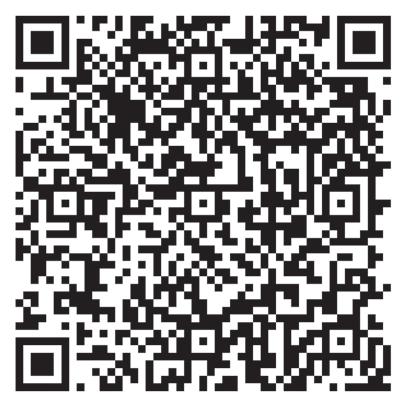
MUSIC
continued from p. 21
movement for its ties to illegal Israeli settlements in the West Bank. The fact that Star Line is a great album doesn’t fix those problems, but it does give me hope that the quality of Chance’s decisions will improve with the quality of his music. To be clear, I don’t need Chance to reflect my beliefs back to me, and I don’t expect him to be perfect. His imperfections are part of what makes him compelling. I listen to him because he’s so effective at sharing what makes him human, and because he can describe his mistakes and triumphs in a way that helps us grasp how he got to where he is now. Star Line proves that he hasn’t le that talent behind. —LEOR GALIL
Sullivan Fortner & His Galactic Friends 7:30 PM, Logan Center for the Arts Performance Hall, 915 E. 60th, $43, $33 U. of C. staff and faculty, $22 under 35, $12 students. b
Shortly a er first touching down in Chicago in 1946, bandleader and composer Sun Ra—then a gigging pianist known as Herman “Sonny” Blount—became a familiar face along the 63rd Street nightlife strip anchored by the Pershing Hotel at 64th and Cottage Grove. The experience he accumulated playing the neighborhood’s clubs, bars, and lounges provided the fuel for his intergalactic Arkestra, which became a foundational force in 20th-century music as well as Afrofuturist thought. A recent re issue of 1957’s Super-Sonic Jazz adds a live performance from the Arkestra’s residency at the Pershing’s Budland nightclub.
Today, neither the hotel nor those venues remain, and the Arkestra blasted off from Chicago in 1961, never to return (except on tour). But if anyone can conjure the ghosts of 63rd Street’s past, it’s Sullivan Fortner. Born in New Orleans and based in New York, the pianist is a fire hose of invention and wit. As one of the most scintillating improvisers on the circuit, he’s become a preferred partner to topflight singers such as Kurt Elling and Cécile McLorin Salvant. (The latter frequently features Fortner in practice-room duets that do numbers on TikTok and Instagram.) Fortner’s latest project, minted for a 110th anniversary Ra tribute last year, blasts through the avant-jazz pioneer’s catalog with a crack band he calls his “galactic friends.” Two of those friends— trombonist Craig Harris and bassist Alex Blake— are Arkestra alumni. The rest of the band consists of trumpeter Marquis Hill (a Chicago native), saxophonist Scott Robinson, trombonist Frank Lacy, and drummer Kendrick Scott. The group will convene at the Logan Center for the Arts—just blocks from the former stomping grounds of Ra’s space-age band.
—HANNAH EDGAR
MONDAY13
Oxvy.Moron See Pick of the Week on page 20. Camila Isabel and Aliyah Jones open. 7:30 PM, Schubas, 3159 N. Southport, $17.55. 18+
WEDNESDAY15
Upchuck Edging and Heet Deth open. 7 PM, Subterranean, 2011 W. North, $22.83. b
Find more music listings at chicagoreader.com/musicreviews
MUSIC
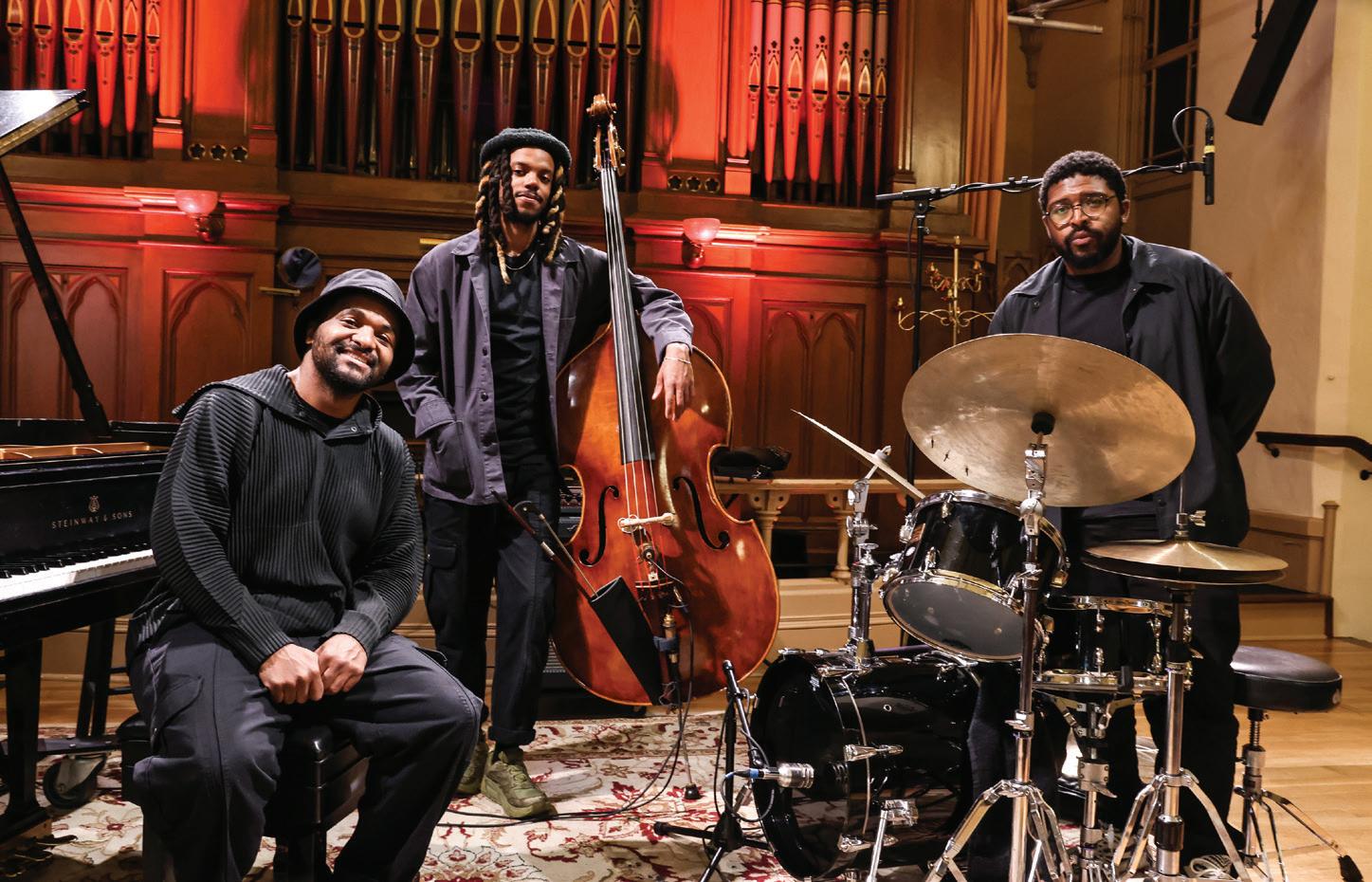

Atlanta punks Upchuck have been unapologetically calling out injustice since forming in 2018, drawing on their lived experiences of racism and sexism. The title of their brand-new third full-length, I’m Nice Now (Domino), winks at the ability of this rollicking five-piece to channel righteous rage into rowdy, grungy, obnoxiously fun music; sometimes raw self-expression is the best way to reset your circuitry so you can fight another day.
Produced by Ty Segall at Texas studio Sonic Ranch and mastered by Heba Kadry, I’m Nice Now captures the band’s frustrations and fears in a riotous mix of punk, hardcore, garage, hip-hop, psychedelic rock, and more. On bouncy album opener “Tired,” Kaila “KT” Thompson vents her anger and exhaustion as a Black woman in America who’s sick of being constantly right about the harms of capitalism and white supremacy but dismissed
CLASSIFIEDS
JOBS
Are you passionate about making a positive impact in the life of my Mother? I am seeking a dedicated & compassionate caregiver to take care & provide exceptional care for my mother. As a caregiver, you will play a crucial role in supporting my mother who is Elderly. Schedule is 5 days a week & 5 hours per day. Salary is $30/hr. Apply by contacting me via email at George (gwssheets@gmail. com) for more details.
Automated Business Designs, Inc. seeks Sr Software Developer (3rd Party API Integrations) in Chicago, IL to dvlp & integrt comp’s prof. staffing sw solut’ns w/3rd prty comps for bckgrnd checks, WOTC, pre-emplymt testing & cand. engagemt. Reqs. Master’s degree or foreign equiv in SW Engg or rel. field & 1 yr of post-bacc. exp. as SW Devlpr Intern, SW Devlpr I, or rel. role. Exp. must incl. C#, ASP. NET includ. Web Forms, MVC, .NET Core; SQL & SQL Server DB Mgmt, optimized SQL queries, mgmt. of SQL Server DBs, creat’g stored procedures for data integrity & perfrmnce; Visual Studio debugger & log analysis for effective issue diagnosis & resolution; Preparing & deploying to Production, includ. release builds, perform’g product’n deploymts, & ensuring app stability & perf post-deploym’t. Salary: $130,709/ yr. Benefits: medical, dental, a 401(K) plan, and PTO. Email resume: jobs@abd.net.
Elik Home & Remodeling, Inc. seeks a Market Research Analyst. Mail resume to 6710 Double Eagle Dr, Ste 309, Woodridge, IL 60517
HOTYD LLC is seeking Product Designer to drive user-centered design
by translating business and technical needs into high-quality interactive products through research, prototyping, testing, and maintaining consistent design standards etc. Position requires a master’s degree in Product Design or related field, proficiency in 3D prototyping software for visualization. Any interested applicants can mail their resume with code HTPD to: HOTYD LLC. 1217 W Fullerton Ave., Chicago, IL 60614.
QUALITY ASSURANCE
ANALYSTS: Chicago, IL & various unanticipated locations throughout the U.S.: Docmt & anlyz biz & func rqmts, & sys capablts. Prep & rvw test strtgy & plan. Dvlp & execte test cases & scripts using Java, Postman API, Test Rail, Bitbucket, & Atlassian Confluence. Create data driven scripts. Prfrm sys, func, & regrssn test for app releases. Raise dfcts found during test in Jira. Sched & mntr batch jobs. Master’s in Sci, Tech, or Engg (any) is req’d.
Salary: $88,088/yr. Mail
CV: Elite Rentals Chicago LLC, 7129 S. Yates Blvd, Floor 2, Chicago, IL 60649
Senior Software Engineer position at Big Red Rooster Flow LLC Position located in Rosemont, IL. Responsible for development, maintenance, testing, and implementation of in-house website and software applications. Salary: $130,707. Benefits: Med., Dent. Vis., 401k, PTO. Position requires Bachelor’s degree in Comp. Eng. Comp. Sci. or rltd field (or foreign equiv) & 4 yrs. relevant software development exp. Position allows for telecommuting within commuting distance of reporting office in Rosemont, IL. Apply via the company website: https:// www.bigredroosterflow. com/careers/ (Req. JR0000038126)
MARKETPLACE
Go Store It Chicago Northside Storage - Lakeview, 2946 N Western Ave, Chicago, IL 60618 hereby gives NOTICE OF PUB-
LIC SALE of the storage space(s) listed below, containing household and other goods will be sold for cash on Oct 20,2025 2:00pm with the contents being sold to the highest bidder. Owner reserves the right to bid. The sale is being held to satisfy a landlord’s lien, in accordance with Illinois Compiled Statutes Chapter 770 ILCS 95/, and will be held online at www.storagetreasures. com C53 Holly Barnard E24 Arsenia Hart I08 Alicia Rodriguez L05 Renato Medina Q22 Kabari Hendrick Q32 Renato Medina T011 James Rossini T165 Yesi Barzaga Z04 Kyle Daniels Z20 Jessie Rosas Chicago Northside Storage
MATCHES
McDonald’s Winnetka - You asked if I’d been at Sherwin-Williams. I said no-wish I had been. Your smile melted me! Tell me what I was wearing and how I look. xiamin57@gmail.com
SERVICES
CHESTNUT
ORGANIZING AND CLEANING SERVICES: especially for people who need an organizing service because of depression, elderly, physical or mental challenges or other causes for your home’s clutter, disorganization, dysfunction, etc. We can organize for the downsizing of your current possessions to more easily move into a smaller home. With your help, we can help to organize your move. We can organize and clean for the deceased in lieu of having the bereaved needing to do the preparation to sell or rent the deceased’s home. We are absolutely not judgmental; we’ve seen and done “worse” than your job assignment. With your help, can we please help you? Chestnut Cleaning Service: 312-332-5575. www.ChestnutCleaning. com www. ChestnutCleaning.com
as preaching to the choir. Thompson is a powerful singer (though the mix buries her vocals to the point where she can be hard to understand), and the band sound even bigger on the songs where she shares the mike with drummer Chris Salado.
On the snarling “Un Momento,” he sings lead, asking for a moment of reprieve to collect his thoughts and breathe. You can hear the anguish and fury in his voice, but he’s “nice” even when he’s firing back: “Chinga a tu madre / So ly.” The band shot a video for the track in Salado’s North Atlanta neighborhood, colloquially known as Little Mexico, with appearances by his father and his son. According to a press release from Domino, ICE raided the area door-to-door the following day. The stacked bill at this Subterranean show also includes Chicago punk bands Edging and Heet Deth, and it ought to feel like very loud group therapy. —JAMIE LUDWIG v
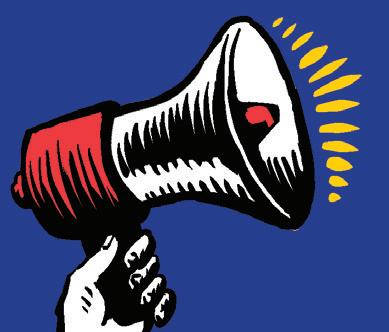
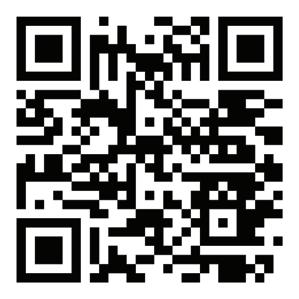

NOW IN ITS 15TH YEAR, OPEN HOUSE CHICAGO (OHC) IS A FREE, CITYWIDE ARCHITECTURE FESTIVAL ORGANIZED BY THE CHICAGO ARCHITECTURE CENTER.
We offer behind-the-scenes access to hundreds of sites across the city and invite the public to explore neighborhoods and discover the stories behind Chicago’s diverse built environment. Whether you’re a seasoned architecture enthusiast or just curious about the city around you, OHC is your chance to see Chicago in a new light.
HQ
This guide was published on October 2. The most up-to-date site information can be found in the CAC app:

NEW THIS YEAR: Visit one of our four Neighborhood Headquarters across the city to plan your day. These spaces offer assistance and festival information from CAC staff and volunteers, neighborhood maps, OHC merch, and a place to recharge before heading to your next site.
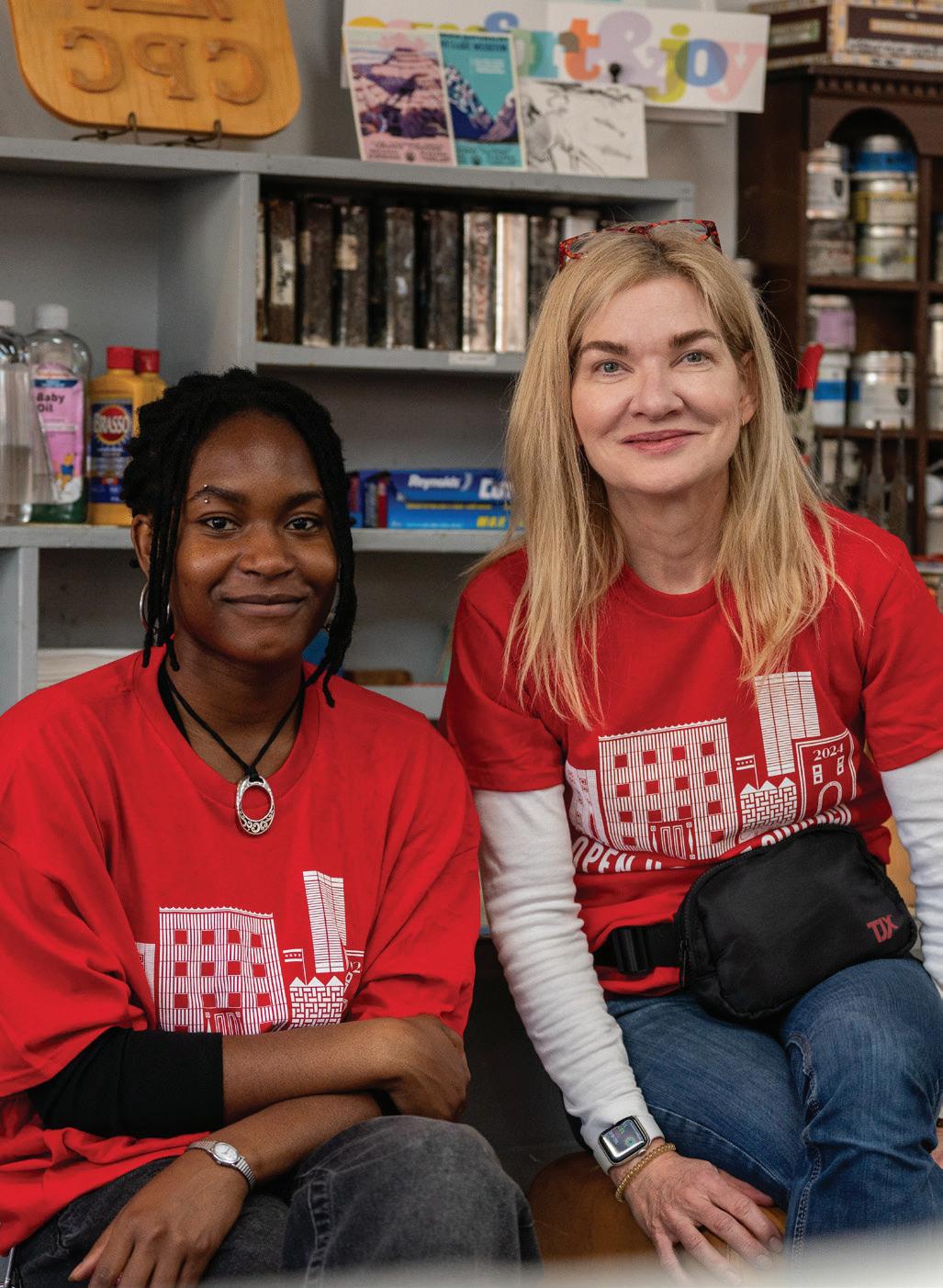







OPEN HOUSE CHICAGO BINGO

Talk to a volunteer in a red OHC shirt
Stop by one of the new sites
architecture.org/ ohcnew25
Visit a historic house or apartment building

Post a photo and tag #OHC2025
Check out a building designed in the last 20 years
Explore a new neighborhood

Take the CTA architecture.org/ ctamap25
Check out an architecture or design studio
Get a city view from a rooftop

Attend a live event or program architecture.org/ ohcevents25
FREE SPACE
Visit a 100+ years old building
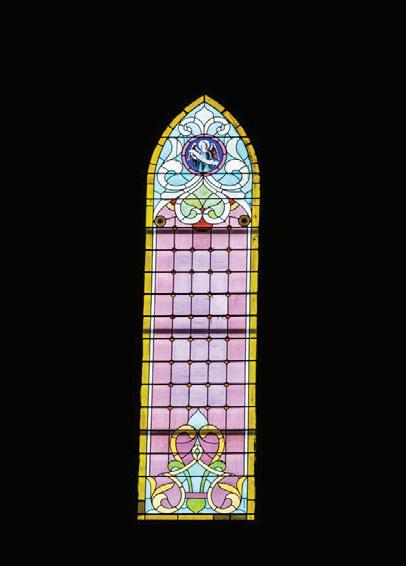
Stop by one of the OHC Neighborhood Headquarters
Spot stained glass at an OHC Explore 5+ sites in a day
Snap a pic for the OHC photo competition architecture.org/ photocompetition
Visit a repurposed building

Visit a music venue or theater
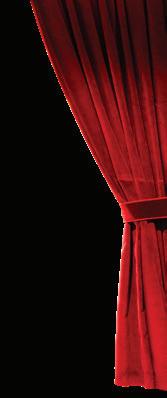
Spot someone eating a Pretty Cool Ice Cream OHC bar
Step inside a house of worship
Download the Chicago Architecture Center App


architecture.org/app
Make a purchase at a locallyowned business or restaurant


Build your own itinerary on the CAC app
Say hello to a fellow OHC explorer
Take the OHC survey architecture.org/ ohcsurvey25
Bring your winning card to the CAC or one of our neighborhood headquarters for a free OHC sticker! While supplies last
NORTH SIDE SITES
LINCOLN SQUARE/ RAVENSWOOD
KOVAL Distillery
Airstream Building Sa
All Saints’ Episcopal Church
Chicago Printmakers Collaborative
DANK Haus German American Cultural Center
National Cambodian Heritage Museum and Killing Fields Memorial
Starshaped Press
AVONDALE
Avondale Bowl
Diversey House
Electrical Audio Su
Judson & Moore Distillery Sa
Lake Effect Brewing Company
LAKEVIEW
Center on Halsted Su
Lake View Presbyterian Church Sa
Lathrop Homes Sa
Zen Buddhist Temple
Sa Saturday only Su Sunday only
New in 2025 Architecture/design studio
ANDERSONVILLE/EDGEWATER
6018North
Chicago Filmmakers
Chicago Magic Lounge
Church of the Atonement Episcopal
Colvin House Su
Edgewater Beach Apartments Sa
Edgewater History Museum
St. Andrew Greek Orthodox Church
LOGAN SQUARE
All Star Press
Lucy Gonzalez Parsons Apartments Sa
Minnekirken
Sulzen Fine Art Studio
The Weaving Mill
Westtown Center
ROGERS PARK/WEST RIDGE
Casa Bonita
Chicago Industrial Arts & Design Center
Emil Bach House
Gerber/Hart LGBTQ+ Library & Archive Sa
Japanese American Service Committee
Loyola University Chicago Mundelein Center for Fine and Performing Arts Sa
Rogers Park Baptist Church
St. Jerome Roman Catholic Church

ALBANY PARK/ IRVING PARK
Carl Schurz High School Sa
Eris Brewery & Cider House
Home of Harmony Vivekananda
Vedanta Society of Chicago
Irish American Heritage Center
St. Edward Roman Catholic Church
UPTOWN
5040-5060 North Marine Drive
Condominiums
Chicago Fair Trade Museum
Graceland Cemetery and Arboretum
Haitian American Museum of Chicago
Manske Dieckmann Thompson, PLLC
Riviera Theatre
Sheridan Trust & Savings Bank
Building
St. Mary of the Lake Roman
Catholic Church
St. Thomas of Canterbury Roman Catholic Church Sa
The CheckOut
HERMOSA
Right Bee Cider
Segundo Ruiz Belvis Cultural Center
Walt Disney House & Birthplace
OPEN HOUSE CHICAGO RUNS SATURDAY, OCTOBER 18 & SUNDAY, OCTOBER 19 FROM 10 A.M. – 5 P.M.
Check

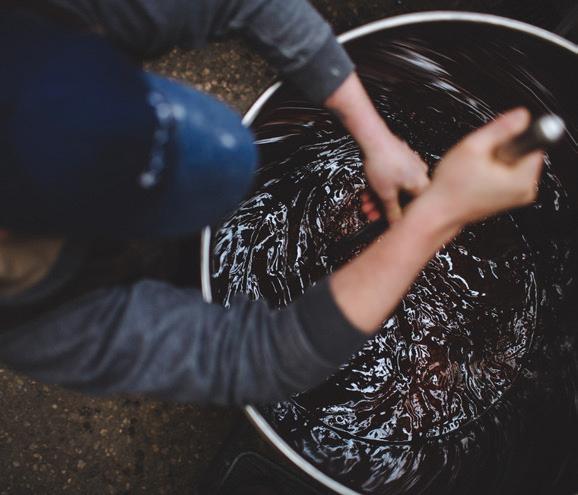

NEIGHBORHOOD HEADQUARTERS: KOVAL TASTING ROOM
4241 N. Ravenswood Ave.
Inside Chicago’s first distillery since the 19 th century, you’ll find a welcoming bar serving cocktails, tasting flights and light bites.
Guests can browse the KOVAL store, enjoy free tastings, and learn more about the history of this family-founded distillery. A local chalk artist will be on-site on Saturday of Open House Chicago weekend.
Pick up a limited-edition bottle of Open House Chicago whiskey; 15% of proceeds will benefit the Chicago Architecture Center!
CAC Membership also includes:
• FREE admission to the Chicago Architecture Center
• Buy-1-get-1 tickets for the CAC River Cruise aboard First Lady
• FREE Essential Walking Tours
• Discounts on Premier Walking Tours, Building Tours, Bus Tours and virtual programs
• 15% off at the CAC Design Store
Membership starts at $75 a year, with student and educator discounts available. architecture.org/membership


WEST SIDE SITES
GARFIELD PARK/ NORTH LAWNDALE
Starling by Duo/. 345 Art Gallery
Central Park Theater Sa
Chicago Sukkah Design Festival at James Stone Freedom Square
Farm on Ogden Sa Herban Produce
Legacy Charter School
Nichols Tower at Homan Square
Our Lady of Sorrows Basilica & National Shrine
Revolution Workshop
Stone Temple Baptist Church
LITTLE VILLAGE/PILSEN
Apollo’s 2000 Theater
Mana Contemporary Chicago Sa OPEN Center for the Arts
Peoples Energy Training Center Sa
Working Bikes Sa
Sa Saturday only Su Sunday only
New in 2025 Architecture/design studio
UKRAINIAN VILLAGE/ WEST TOWN
Holy Trinity Orthodox Cathedral Sa
Ignite Glass Studios Su
Intuit Art Museum
Kenar Studio
Polish Museum of America Sa
St. Helen Roman Catholic Church
St. Nicholas Ukrainian Catholic Cathedral
Sts. Volodymyr & Olha Ukrainian Catholic Church
Ukrainian Institute of Modern Art
Ukrainian National Museum Wild Mile
AUSTIN
Aspire Center
Assumption Greek Orthodox Church
Austin Community Family Center
Austin Harvest - By The Hand Club For Kids Sa
BUILD Headquarters Sa
Christ the King Jesuit College Preparatory School
Fraternité Notre Dame
Third Unitarian Church Sa
NEAR WEST SIDE
345 N. Morgan
800 Fulton
Church of the Holy Family
District Brew Yards
Field Notes Brand
Four Star Mushrooms
Jane Addams Hull-House Museum
National Hellenic Museum
National Public Housing Museum
Saint Ignatius College Prep
St. Basil Greek Orthodox Church
The Roof Crop
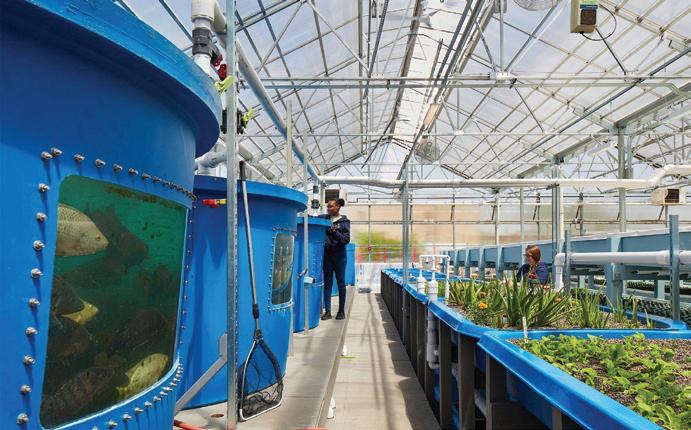
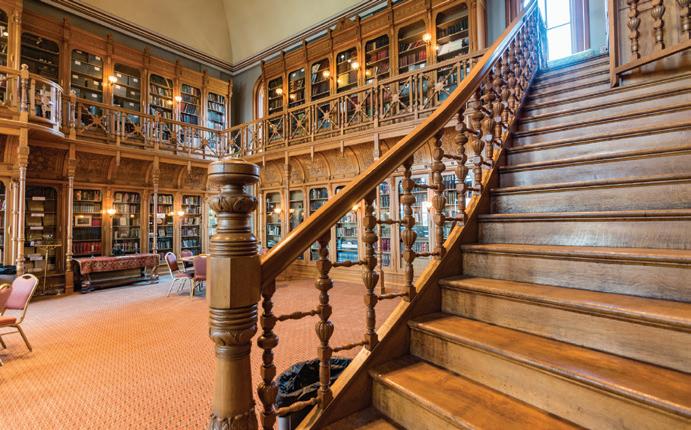

OPEN HOUSE CHICAGO RUNS SATURDAY, OCTOBER 18 & SUNDAY, OCTOBER 19 FROM 10 A.M. – 5 P.M.
Check the app for up-to-date information, sitespecific hours, amenities and programming.
NEIGHBORHOOD HEADQUARTERS: STARLING BY DUO/ 3243 W 16th St.
New to North Lawndale, Starling by Duo/ is a “fourth place”–a communal space designed for gathering, learning and creating. Explore flexible spaces like the Moon Room library nook, the skylit Sun Room, a plug-and-play Sound Studio, and shaded outdoor terraces and gardens. Starling was envisioned as more than a building; it’s a shared neighborhood resource that reinvests in the community it serves.
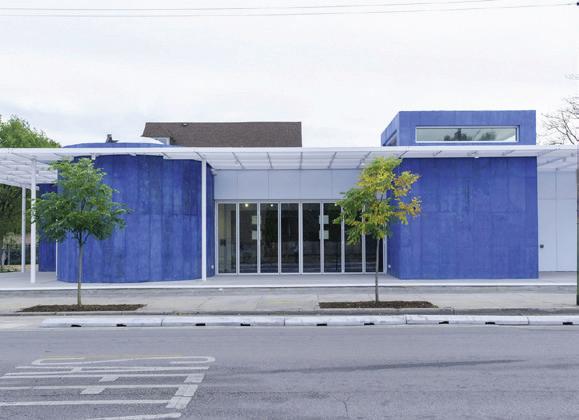

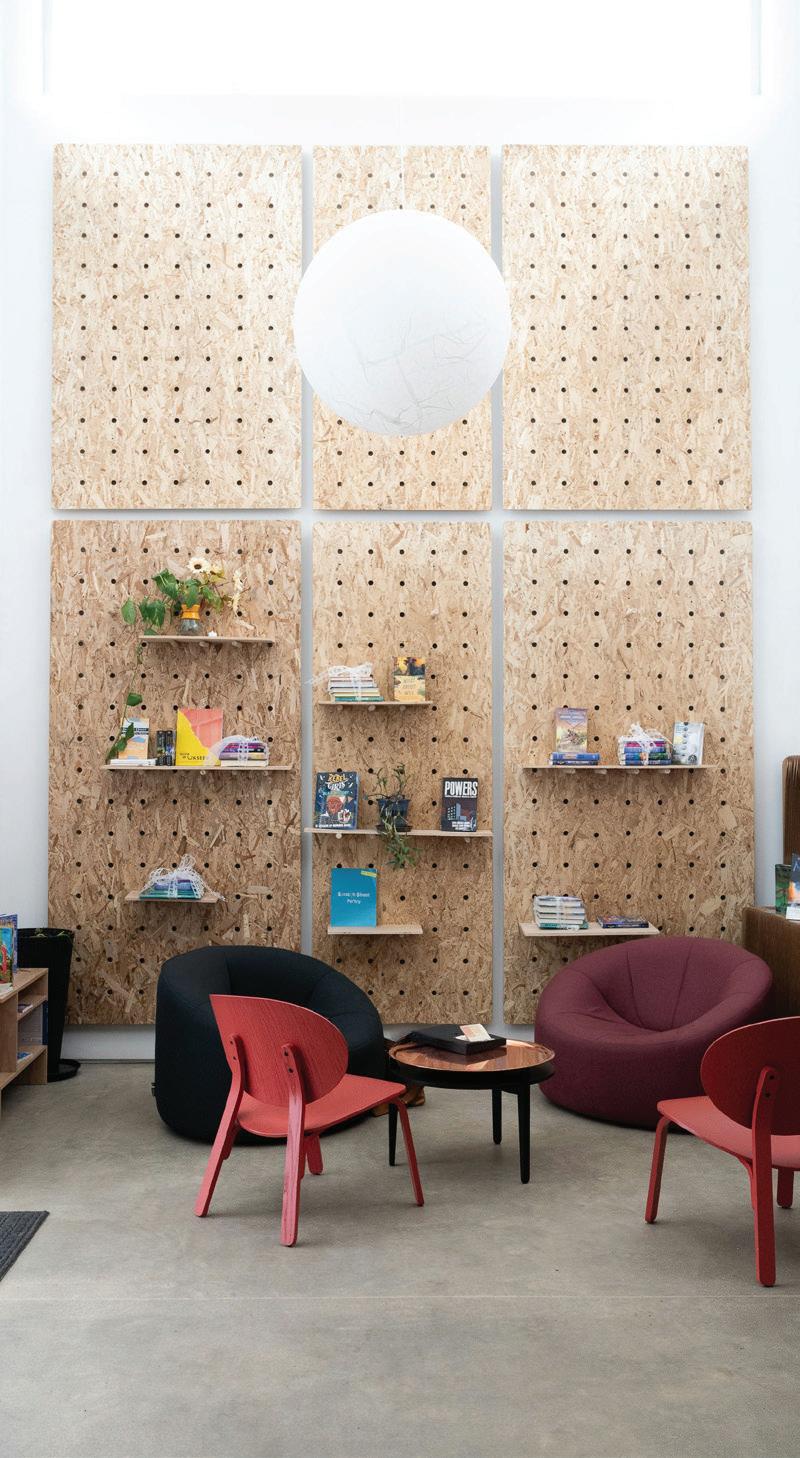
Enter one or all 5 categories: • Interior
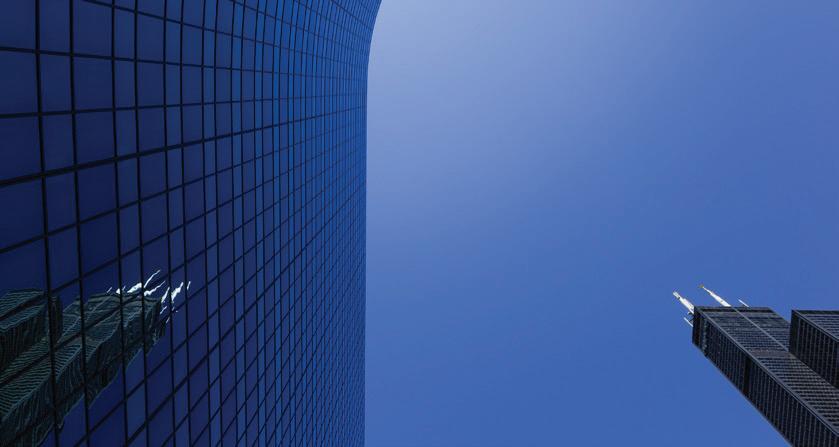

& Buildings
Whether you’re a pro behind the lens or just snapping with your phone, this is your chance to capture the festival. architecture.org/photocompetition
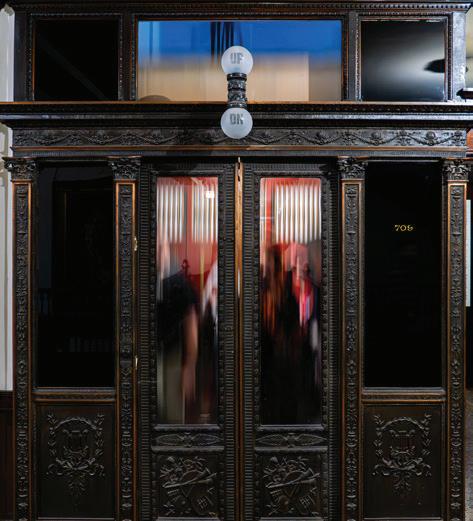

SOUTH SIDE SITES
BRIDGEPORT/ CHINATOWN
Ramova Theatre
Bubbly + Norwich
Chicago Maritime Museum
Chinese American Museum of Chicago
Heritage Museum of Asian Art
Hilliard Tower
Apartments Sa
Museum of Post Punk and Industrial Music
St. Mary of Perpetual Help Roman Catholic Church
Zhou B Art Center
CHATHAM/SOUTH SHORE
Avalon Regal Theater
Bourdeau Griffin
Design Center
Stony Island Arts Bank
BRONZEVILLE
Boxville
Ebenezer Missionary Baptist Church
First Church of Deliverance
Illinois Tech’s S.R. Crown Hall Su
Overton Center for Excellence Sa
South Side Sanctuary
The Forum
The Historic Wabash
YMCA Sa
ENGLEWOOD
Art Center of Englewood
Englewood POPCourts Sa
Growing Home’s Wood Street Urban Farm Sa
St. Benedict the African Roman Catholic Church
PULLMAN
Greater Tabernacle Cathedral
Historic Pullman Foundation
Pullman Artspace Lofts
Pullman National Historical Park
Pullman Tech Workshop
BEVERLY/ MORGAN PARK
Beverly Hills Tennis Club
Ingersoll-Blackwelder House
John H. Vanderpoel Art Association
Nicky’s of Beverly
Paul and Jean Harris Home Ridge Historical Society
Wild Blossom Meadery & Winery
HYDE PARK/ WOODLAWN
Augustana Lutheran Church of Hyde Park
Chicago Theological Seminary
David Rubenstein Forum at the University of Chicago
First Unitarian Church of Chicago Sa
Grand Ballroom
Hyde Park Art Center
Hyde Park Union Church
KAM Isaiah Israel Su
Smart Museum of Art, The University of Chicago
St. Paul & the Redeemer Episcopal Church Sa
St. Thomas the Apostle Roman Catholic Church
Swift Hall
UChicago Joseph Bond
Chapel
UChicago Quadrangle Club
NEIGHBORHOOD HEADQUARTERS: RAMOVA THEATRE
3520 S. Halsted St.
Originally opened in 1929 on Chicago’s South Side, this historic atmospheric-style movie palace has been reborn as a world-class live music venue, craft brewery, and grill. Visitors can tour the restored theatre and Ramova Loft, meet the owner-developers who spearheaded its revival, and learn more about the building’s remarkable rehabilitation.
Stay for a pint at Other Half Ramova, enjoy classic diner fare at the revived Ramova Grill, or simply soak in the history and community spirit that make this landmark a cultural hub once again.
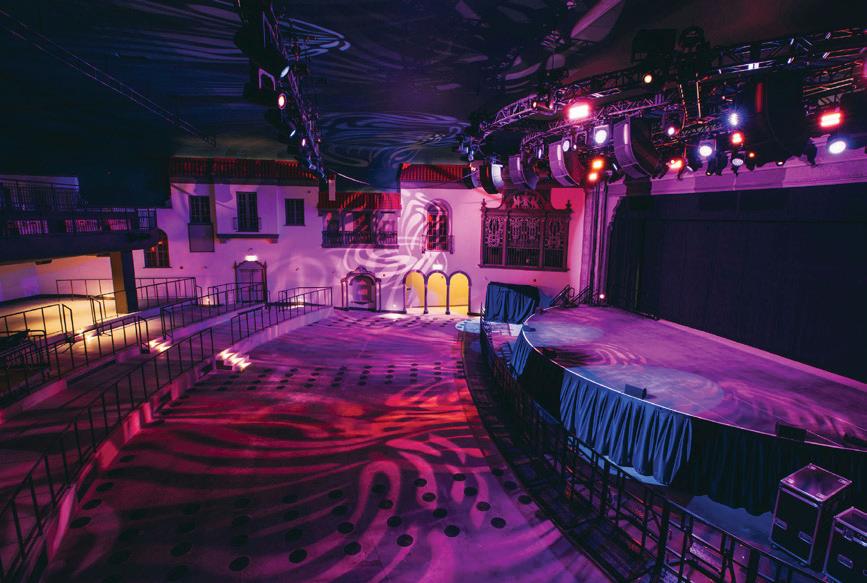
DOWNTOWN SITES
HOK Sa
Holabird & Root LLC Sa
DOWNTOWN
Chicago Architecture Center
1 North Dearborn
150 North Riverside
333 South Wabash
540 W. Madison
Adrian Smith + Gordon Gill Architecture
Auditorium Building,
Roosevelt University
Bank of America Tower Sa
bKL Architecture
Broadway In Chicago’s James M. Nederlander Theatre Sa
Chicago Cultural Center
Chicago Loop Synagogue Su
Climate Action Museum
Columbia Yacht Club
Federal Reserve Bank of Chicago and Money Museum
Fine Arts Building
First United Methodist Church at the Chicago Temple
Goettsch Partners Sa
Harold Washington Library Center
HKS Sa
Sa Saturday only Su Sunday only
New in 2025 Architecture/design studio
NEAR NORTH SIDE
Access Living Headquarters Sa
Joan W. and Irving B. Harris Theater Su
Marquette Building Sa
McCormick Bridgehouse & Chicago River Museum
Perkins and Will
Pru Sa
Ross Barney Architects Sa
Seventeenth Church of Christ, Scientist
Skidmore, Owings & Merrill (SOM) Sa
Teatro ZinZanni Sa
The Central Standard Building
The Chicago Board of Trade Building
The Cliff Dwellers Club Sa Union League Club of Chicago
Wintrust’s Grand Banking Hall
NEAR SOUTH SIDE
Glessner House
McCormick Place Rooftop Farm Sa
Quinn Chapel
Second Presbyterian Church
South Asia Institute Sa
Wheeler Mansion
Willie Dixon’s Blues Heaven Foundation (Chess Records) Su

Alliance Française de Chicago Sa
Anti-Cruelty
Christ the Savior Orthodox Church
Fourth Presbyterian Church
Graham Foundation for Advanced Studies in the Fine Arts Sa
Hawksmoor Chicago
Holy Name Cathedral
International Museum of Surgical Science
St. James Episcopal Cathedral
St. Joseph Church (Near North Side) Su
The Arts Club of Chicago Sa
The Driehaus Museum’s Murphy Auditorium
The House of Glunz & The Glunz Tavern
The Palette & Chisel Academy of Fine Arts

OPEN HOUSE CHICAGO RUNS
SATURDAY, OCTOBER 18 & SUNDAY, OCTOBER 19 FROM 10 A.M. – 5 P.M.
Check the app for up-to-date information, sitespecific hours, amenities and programming.
